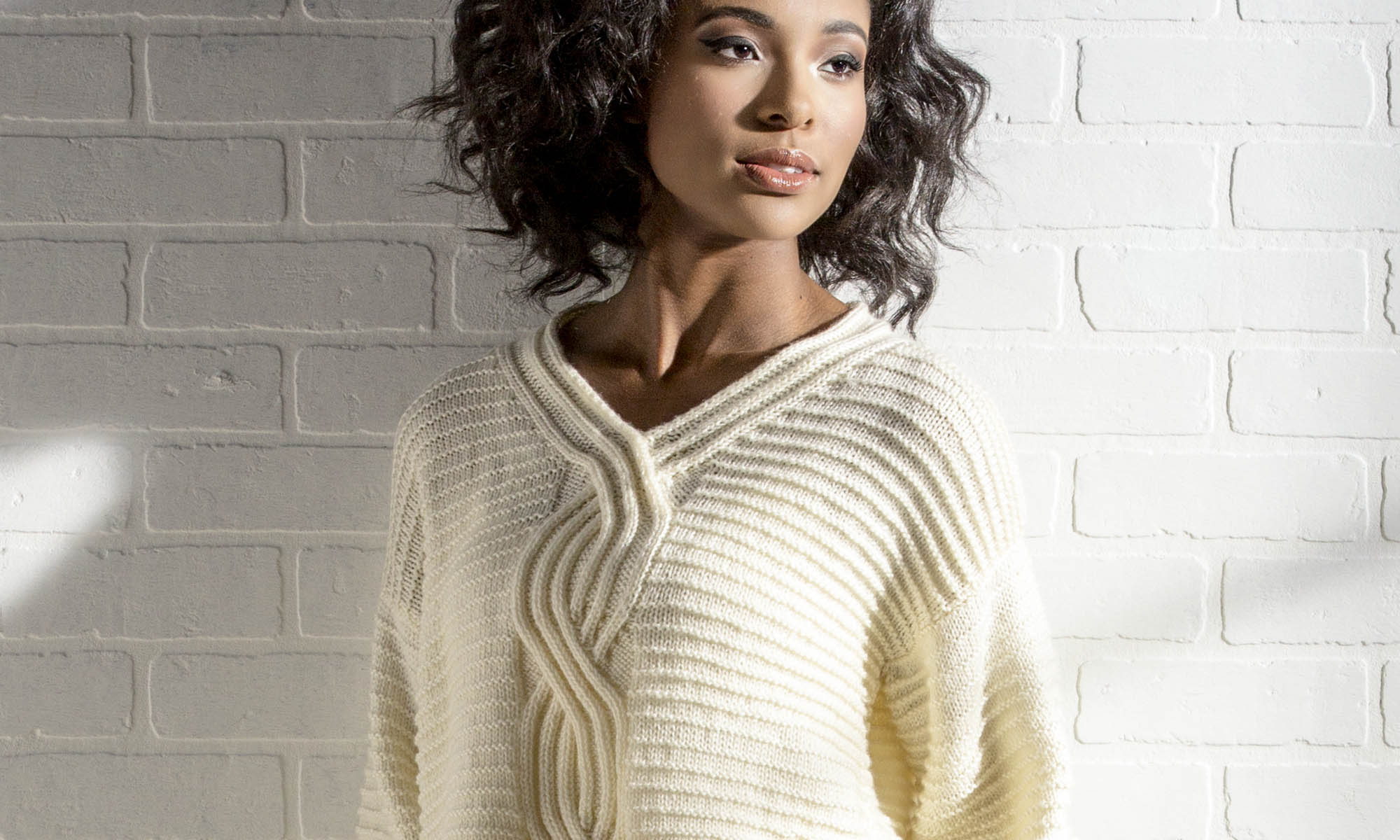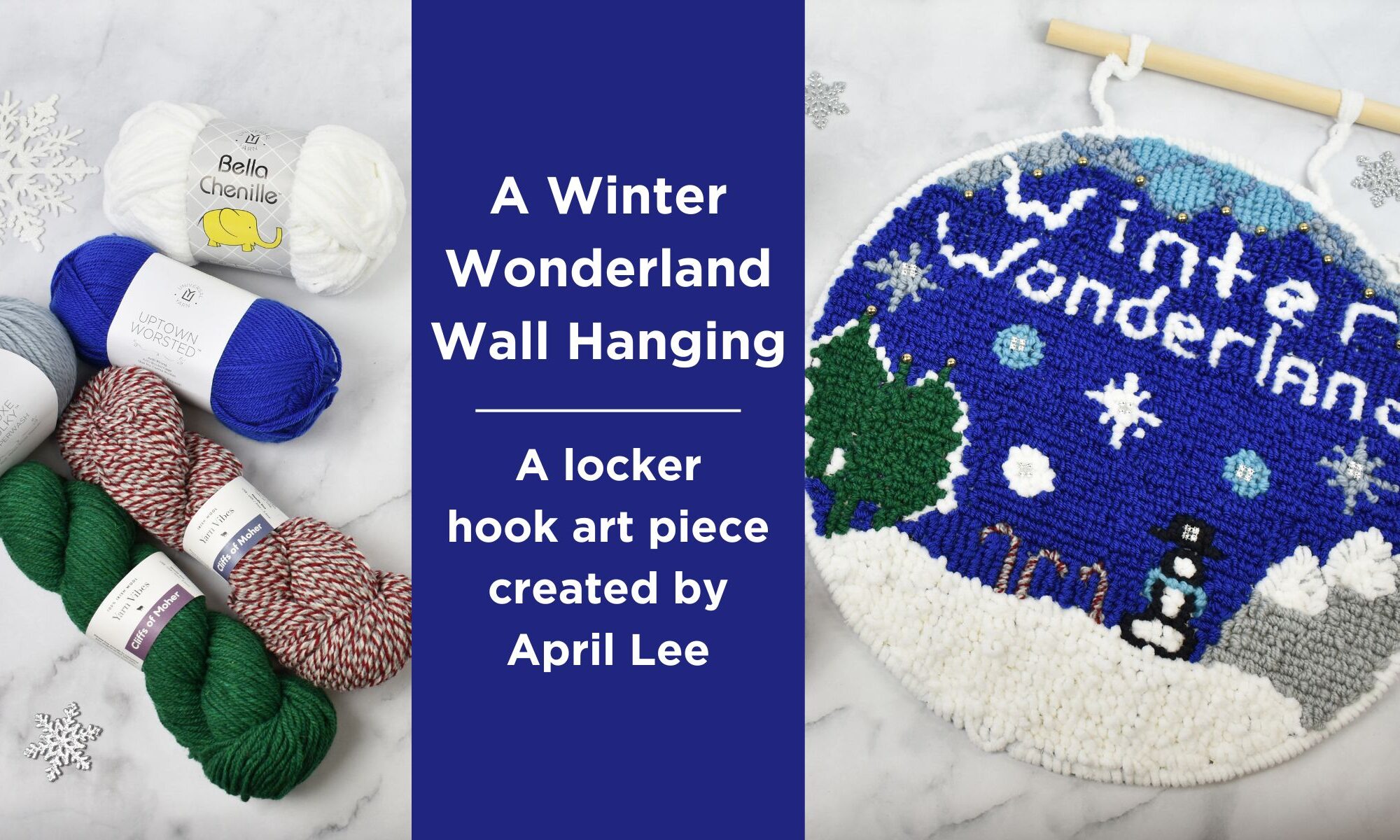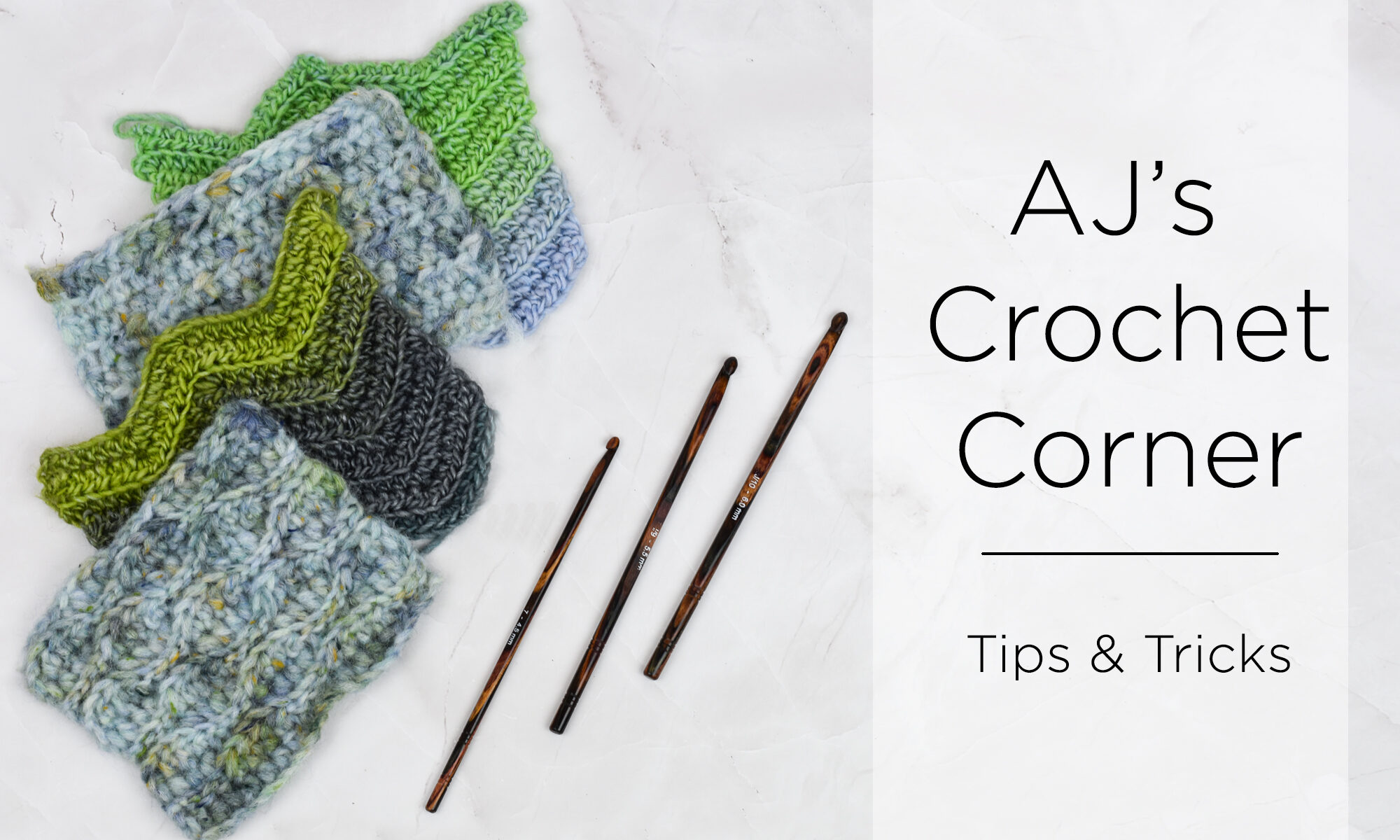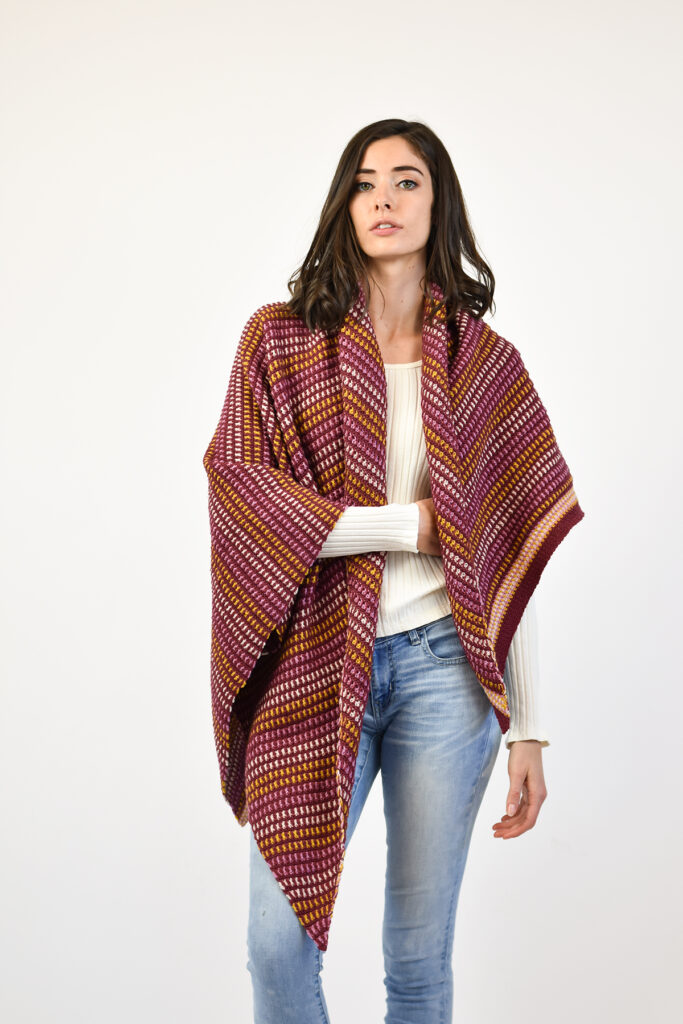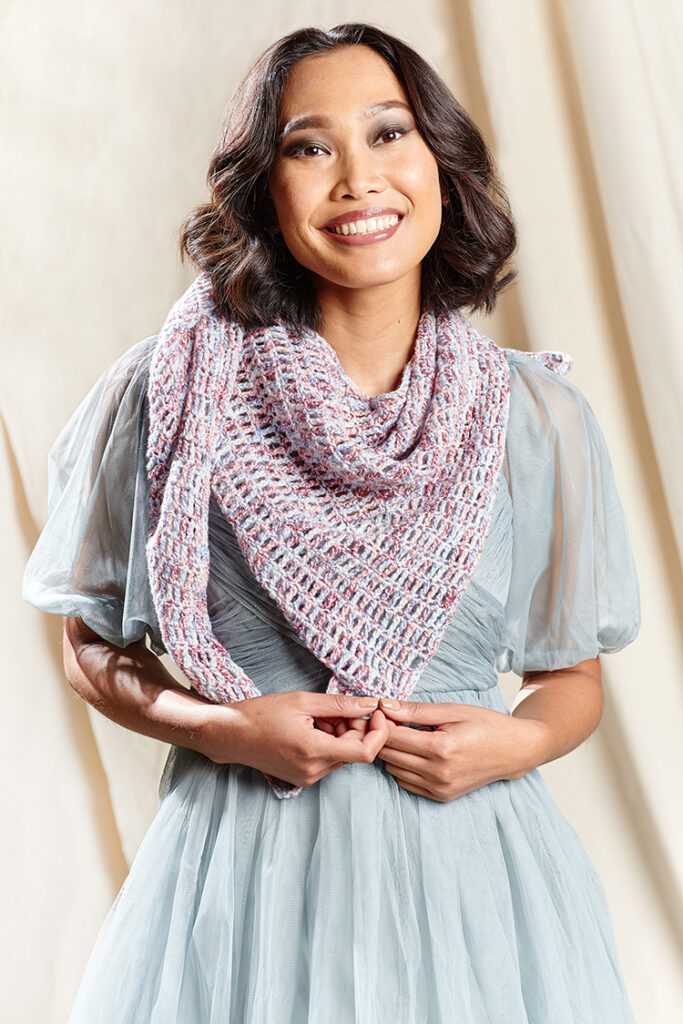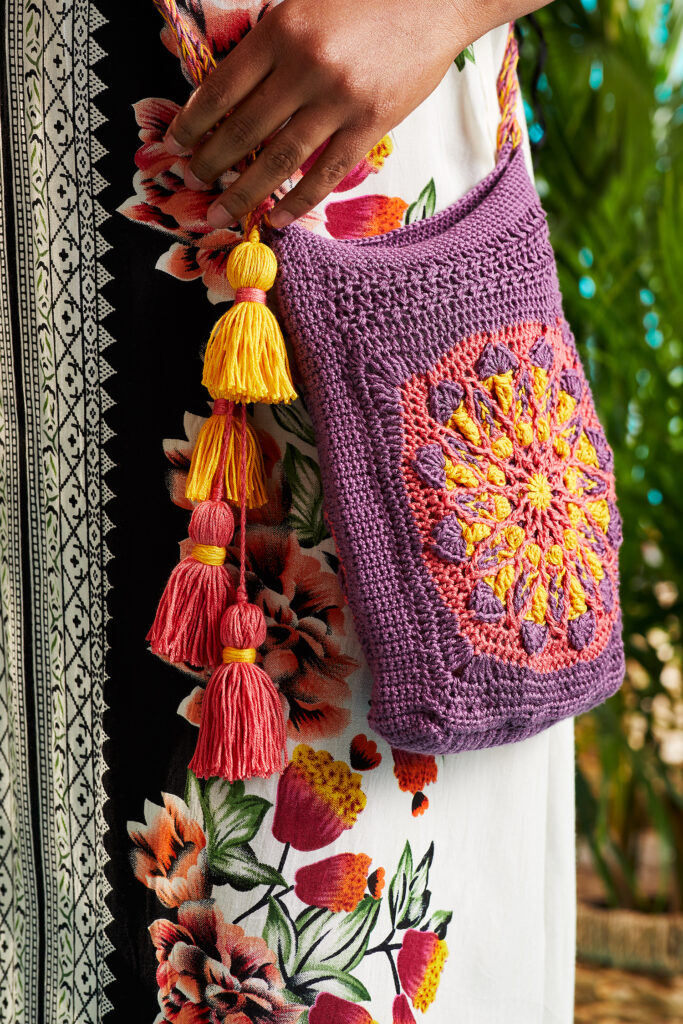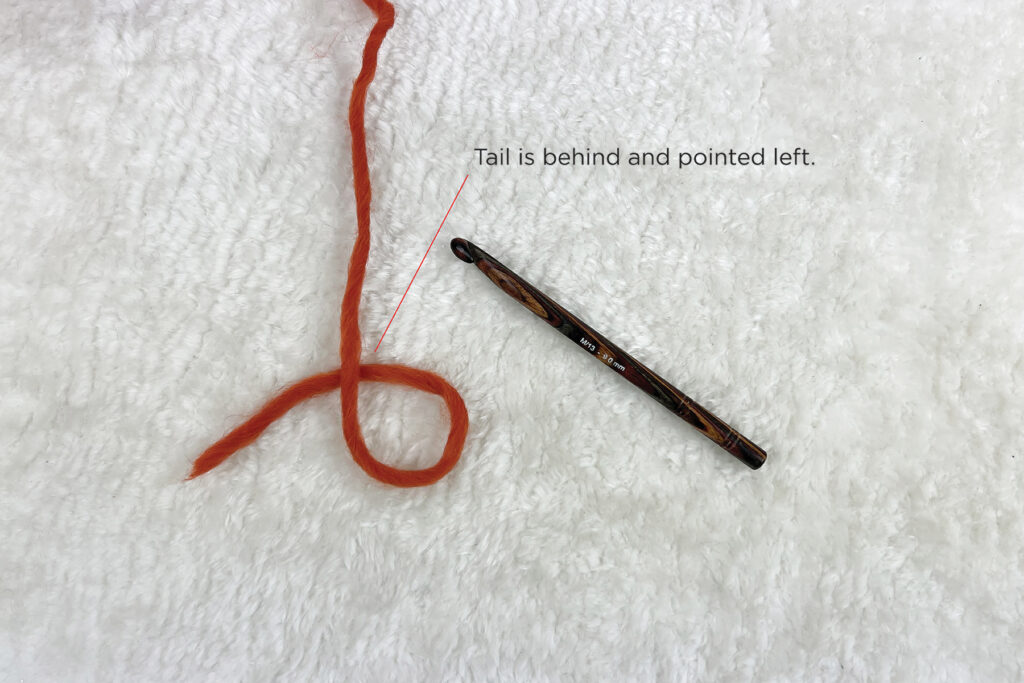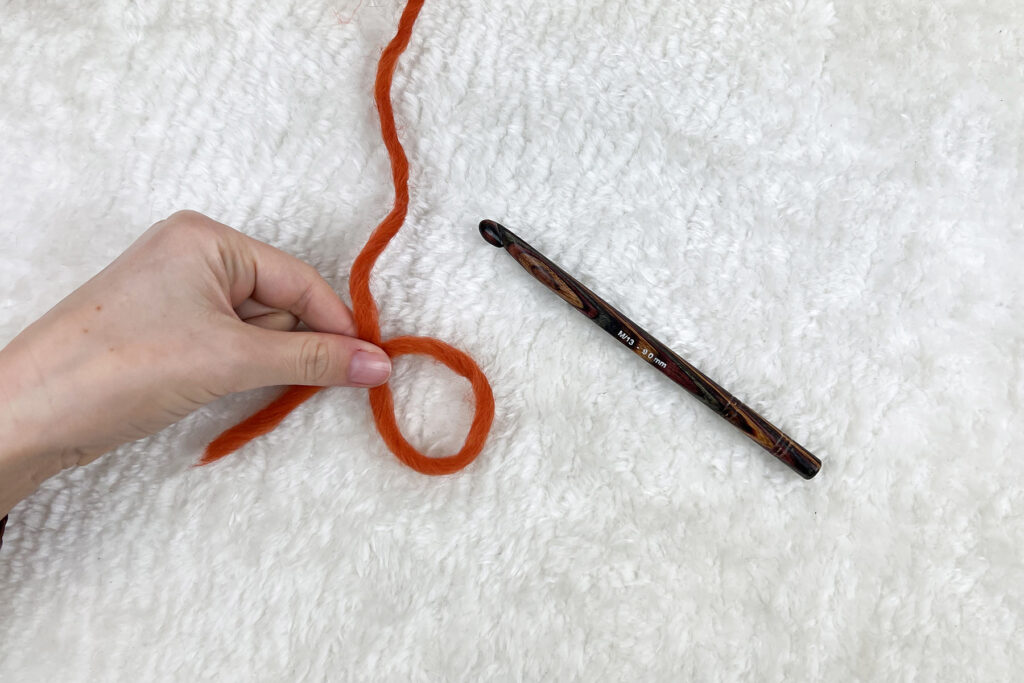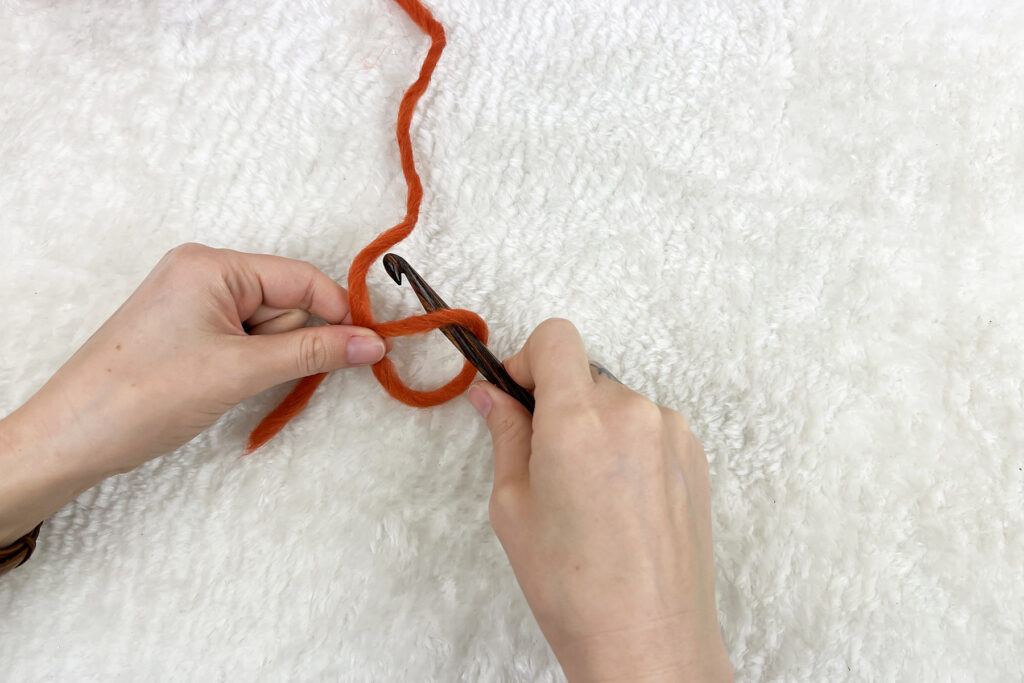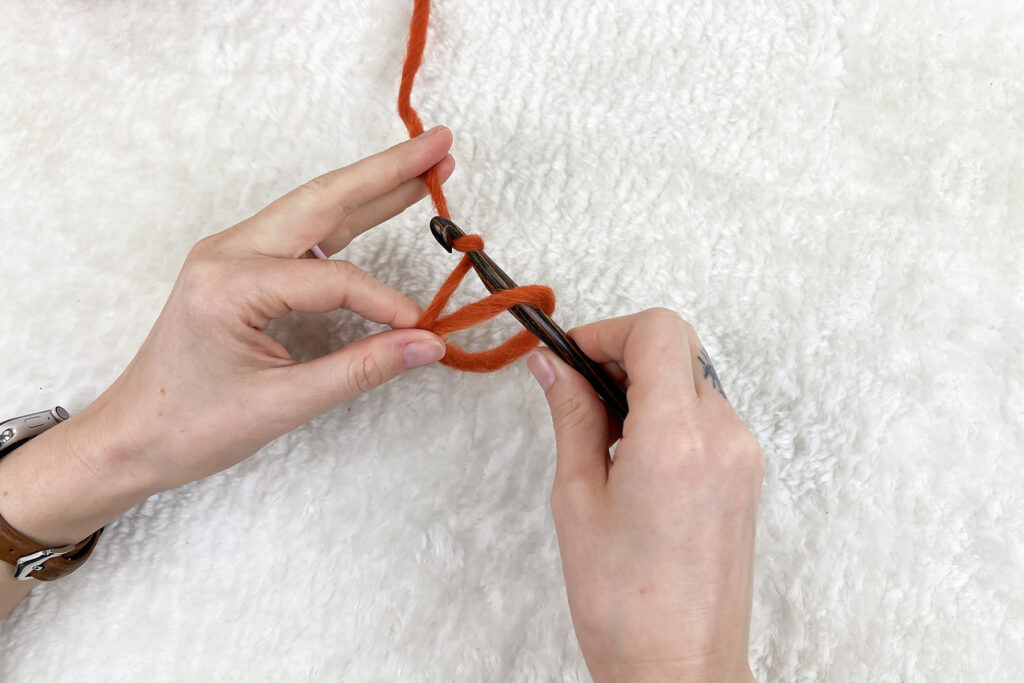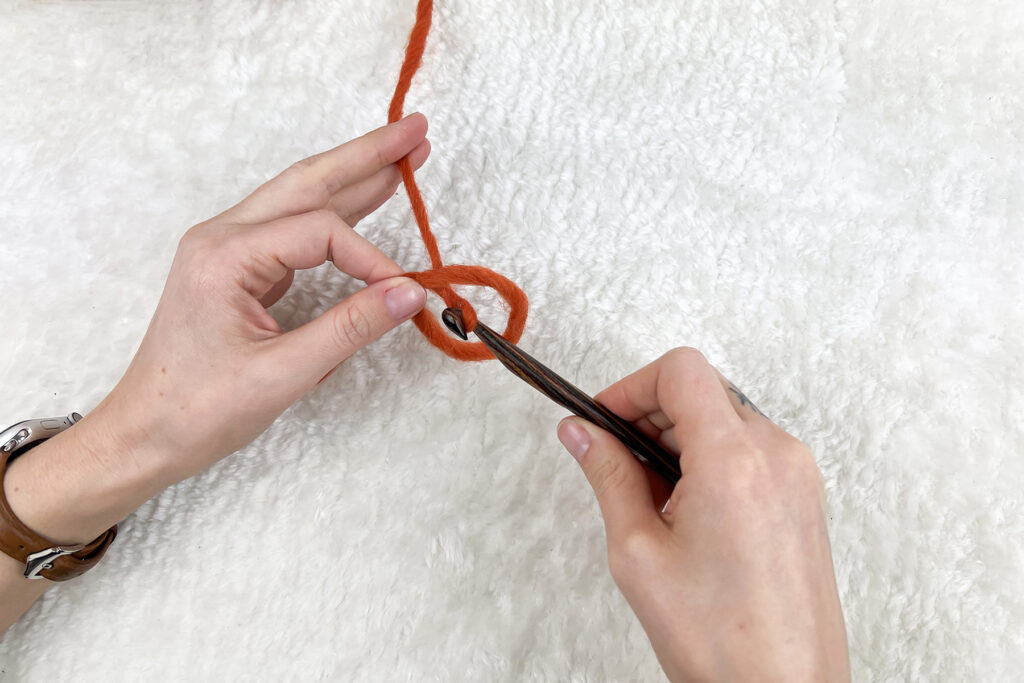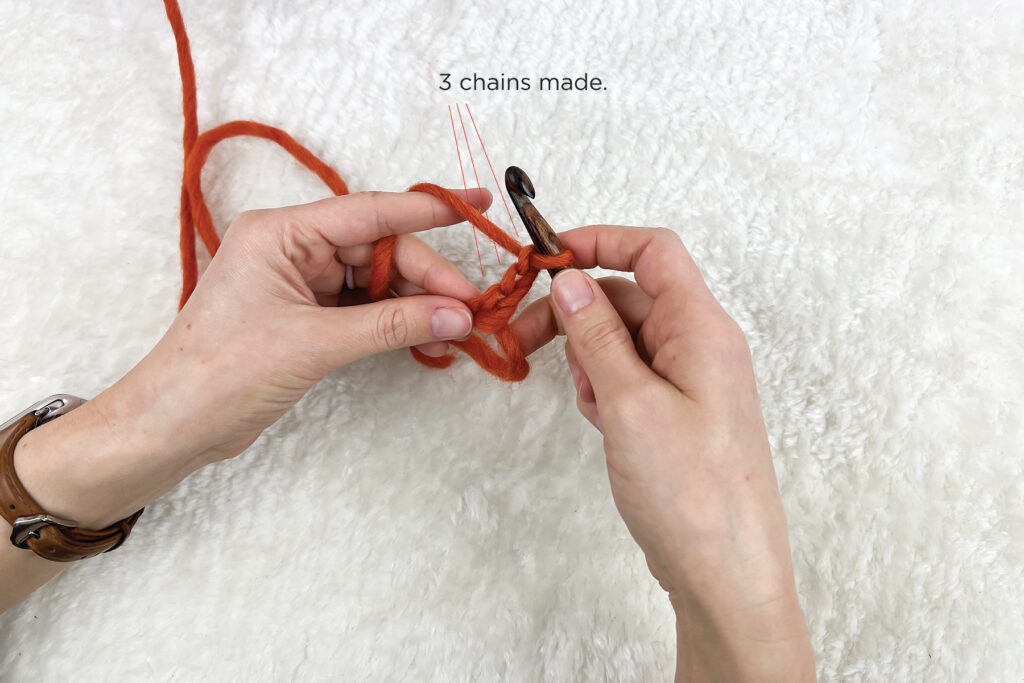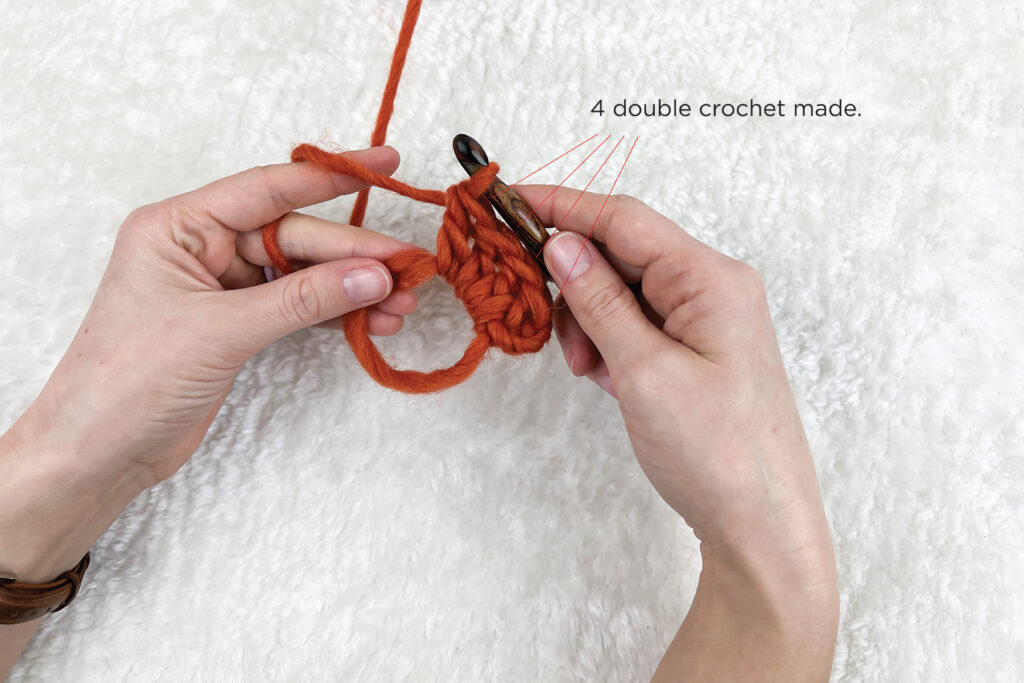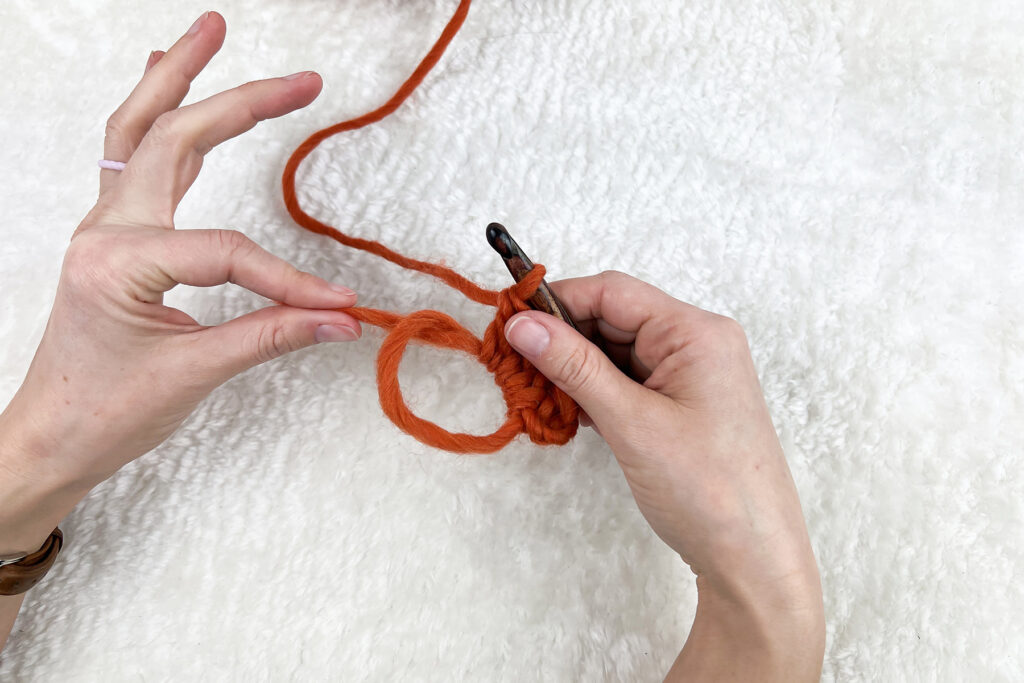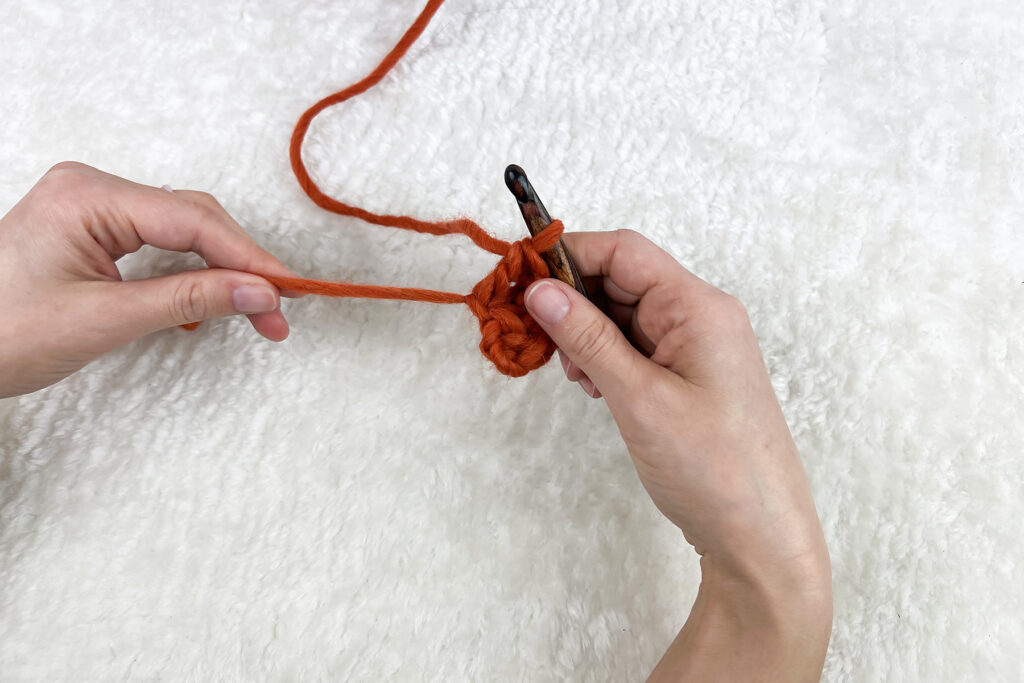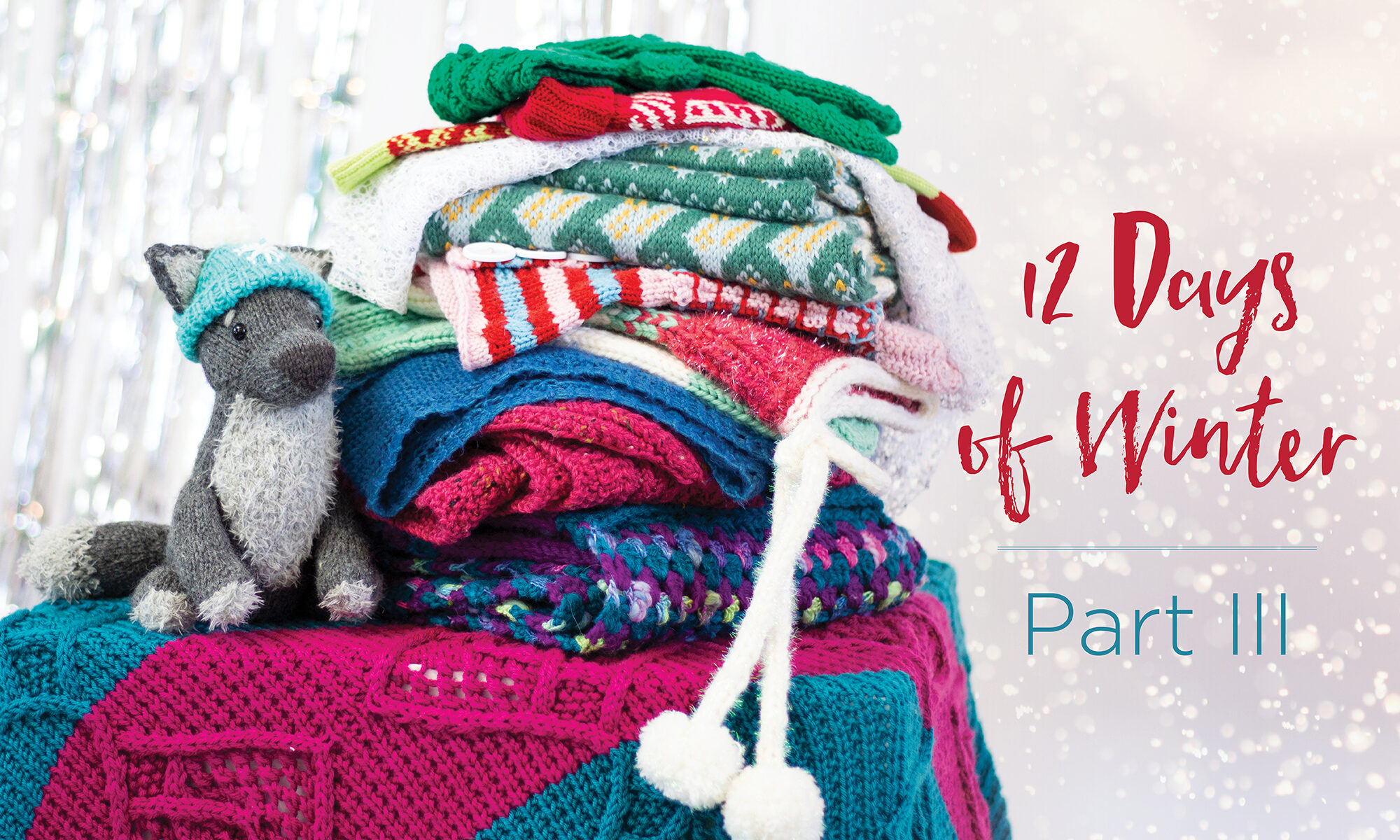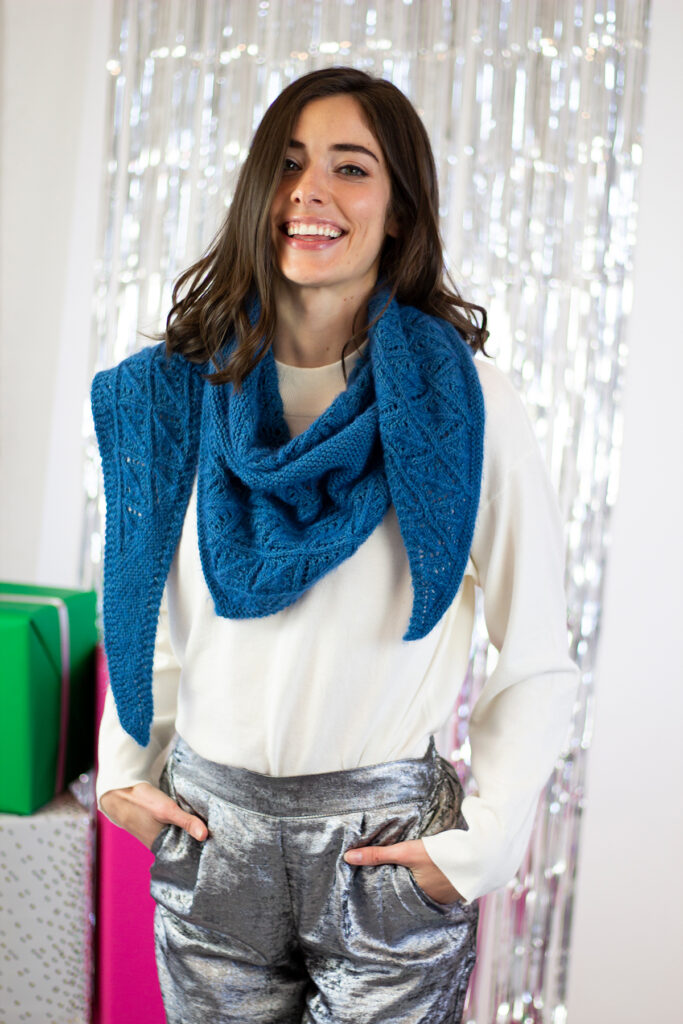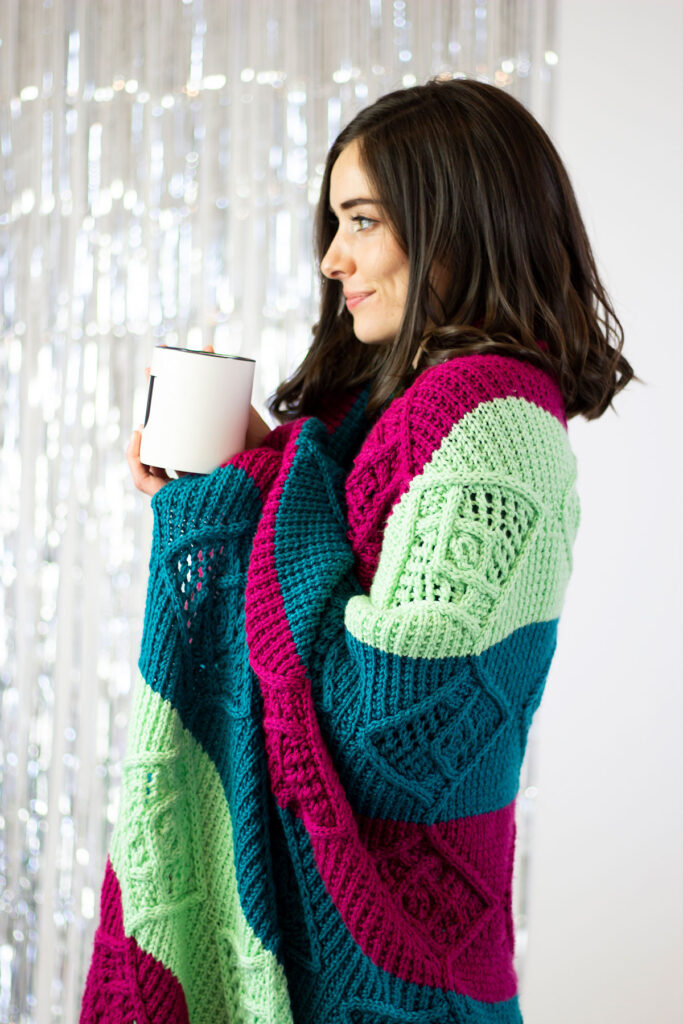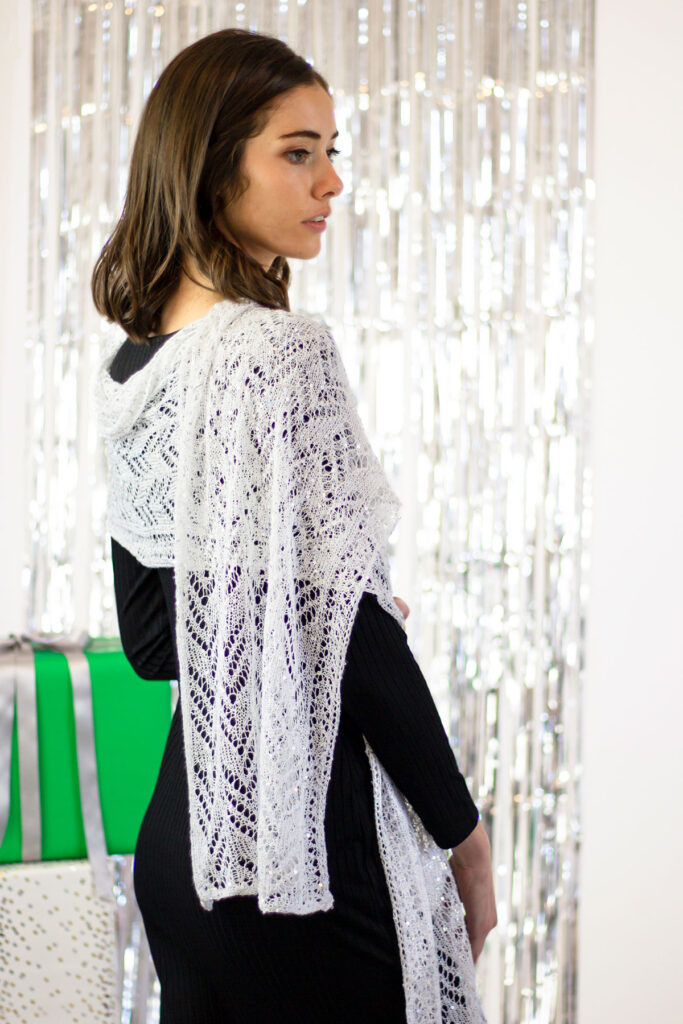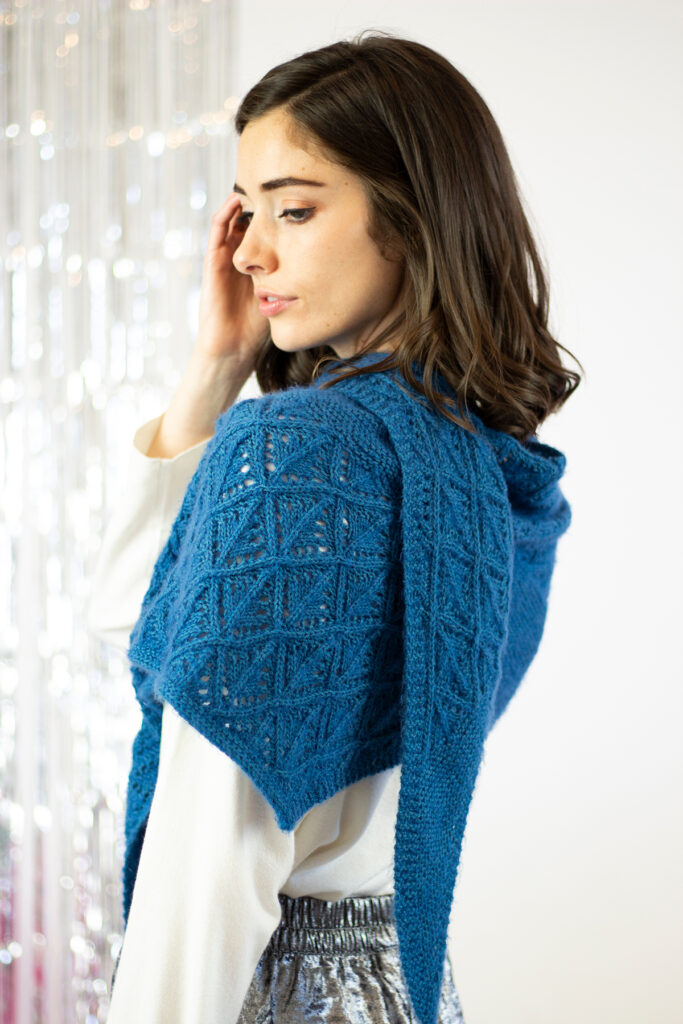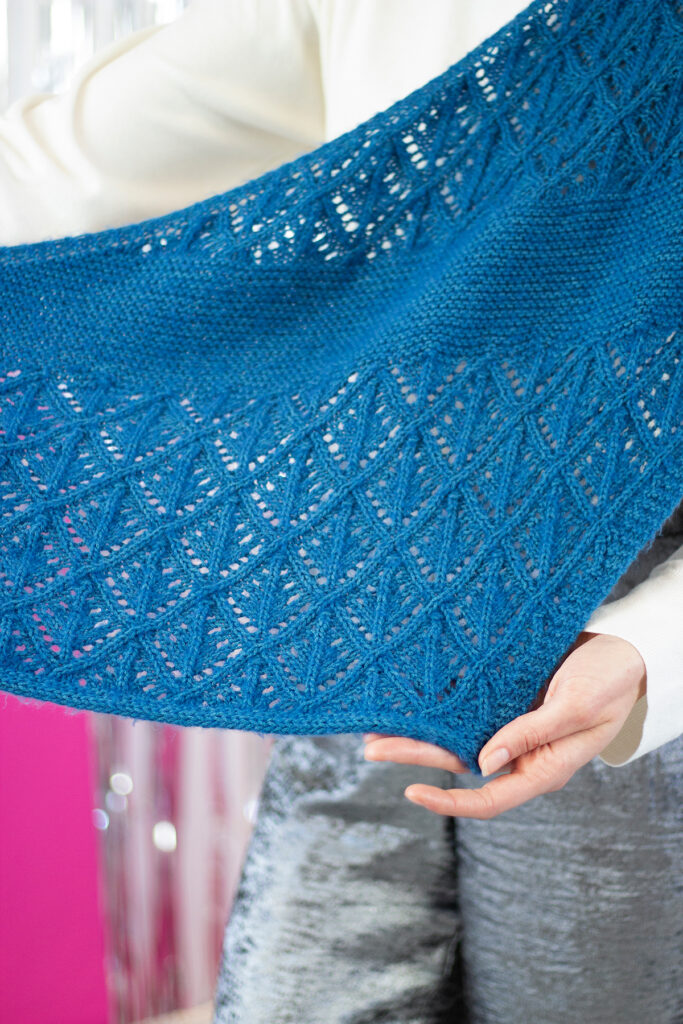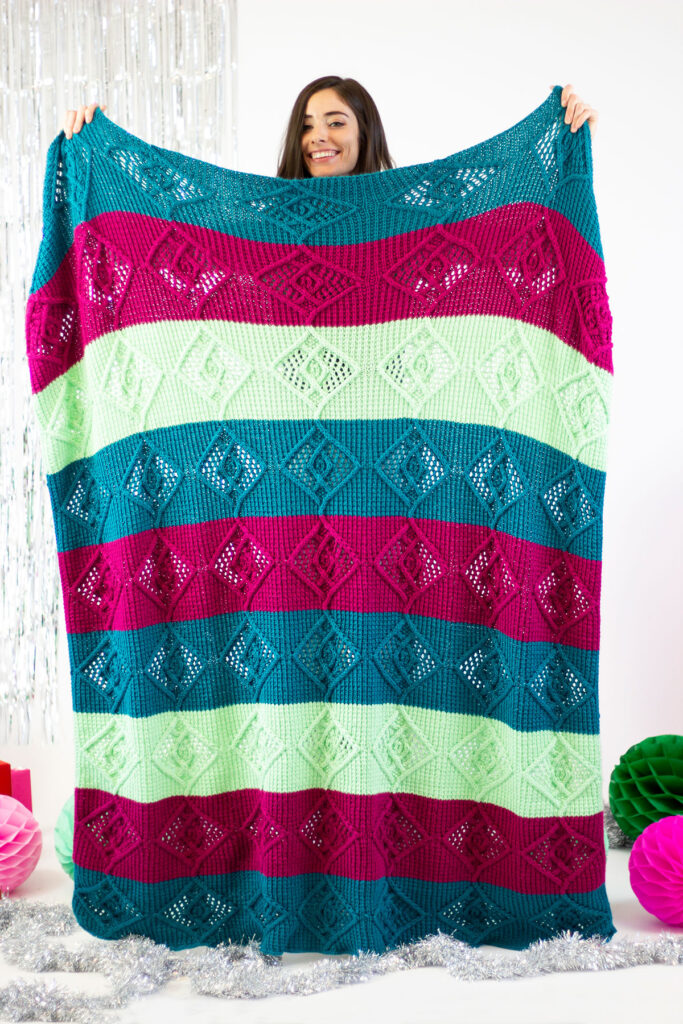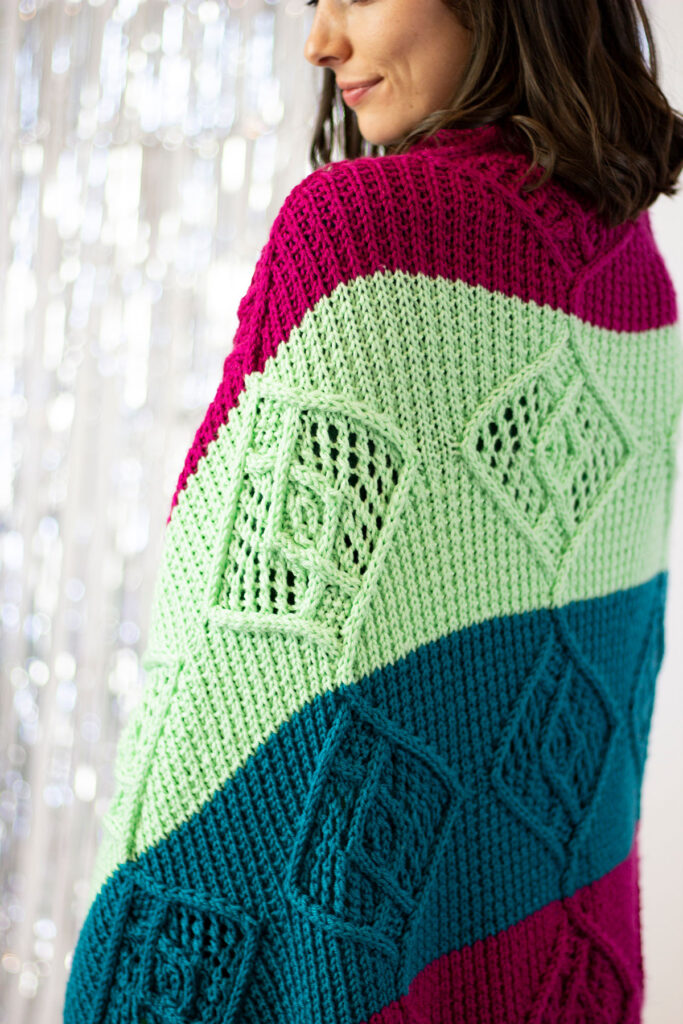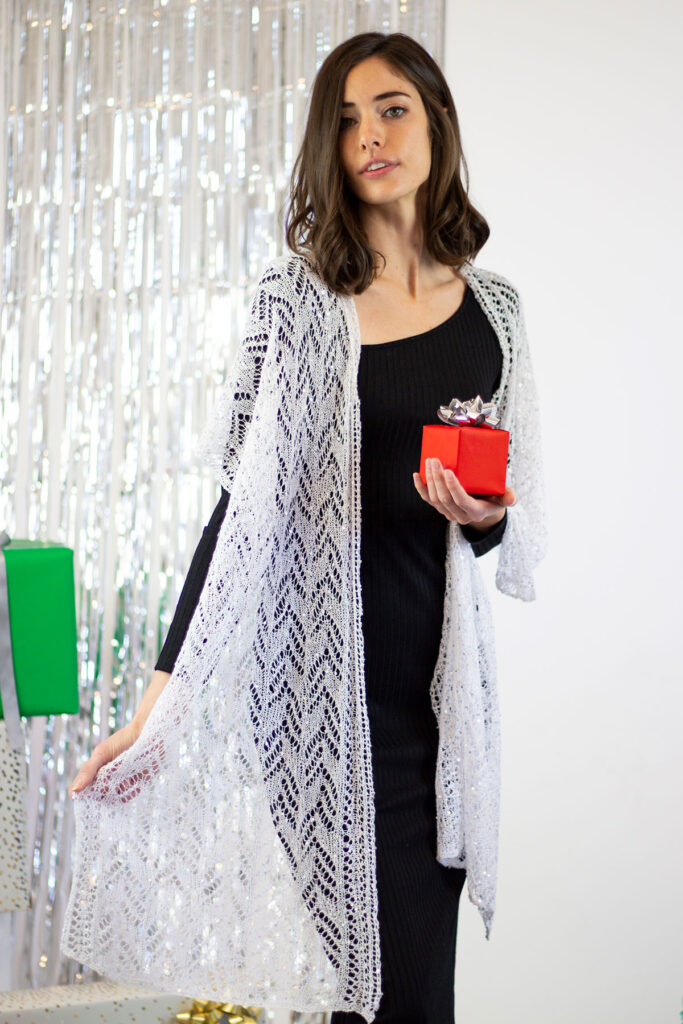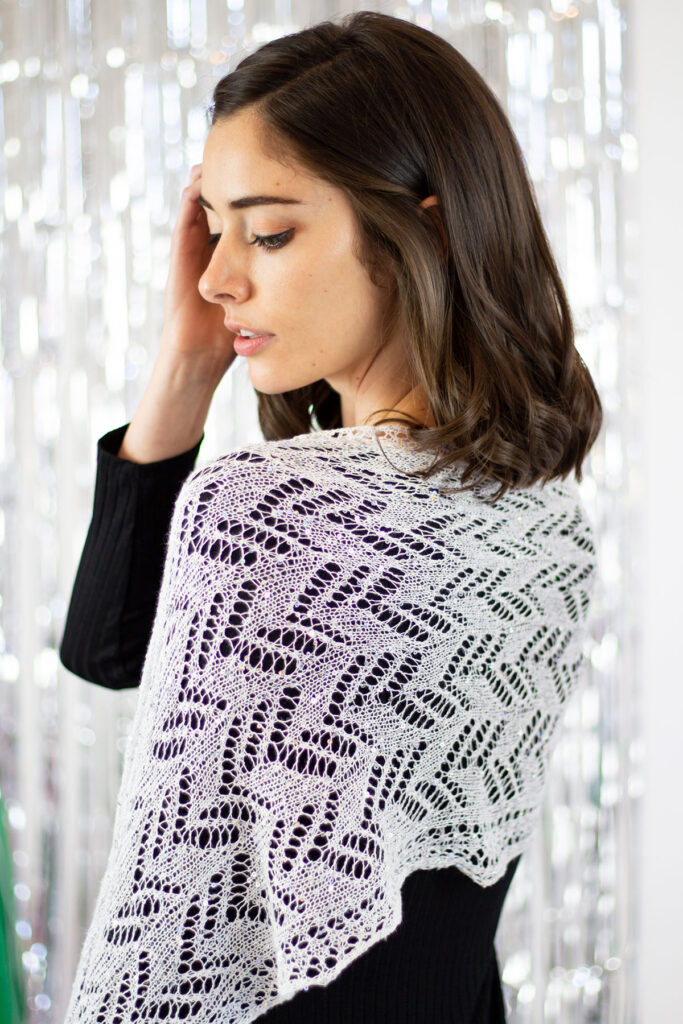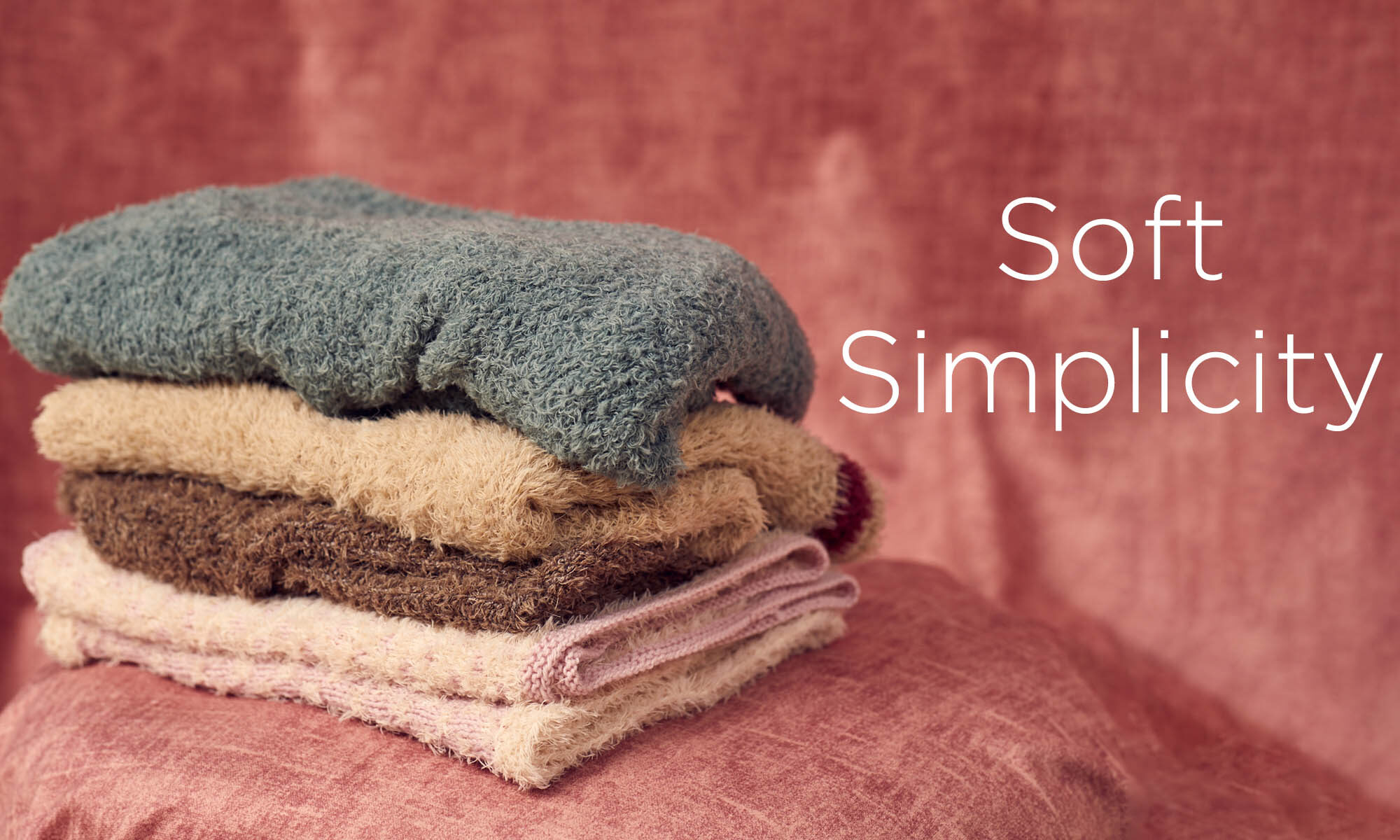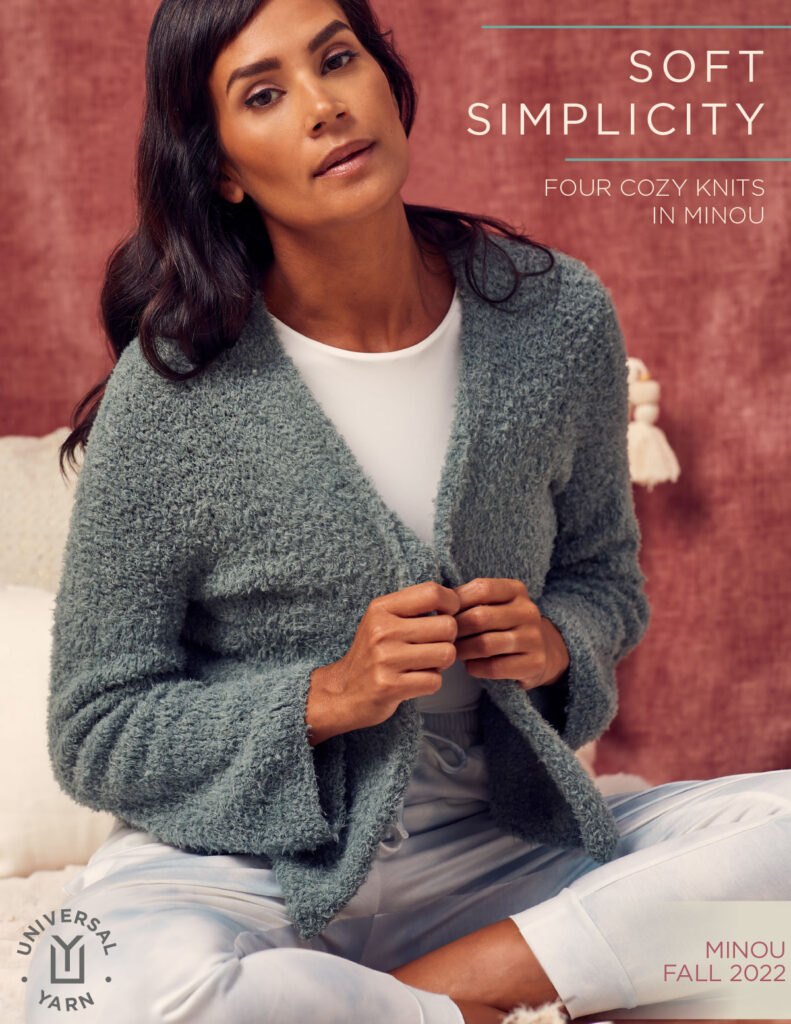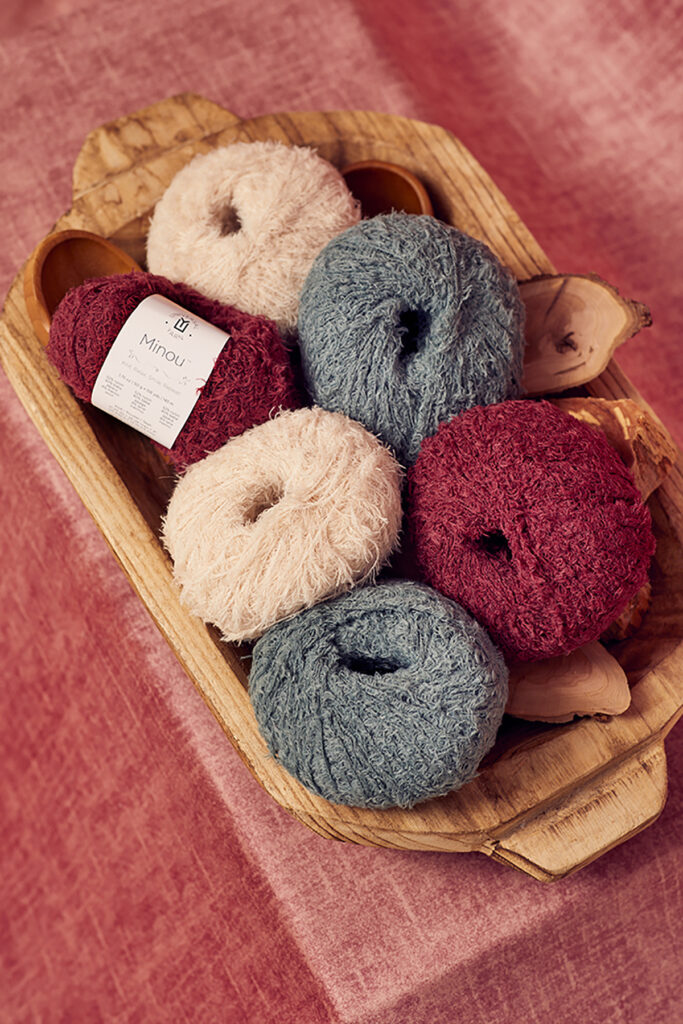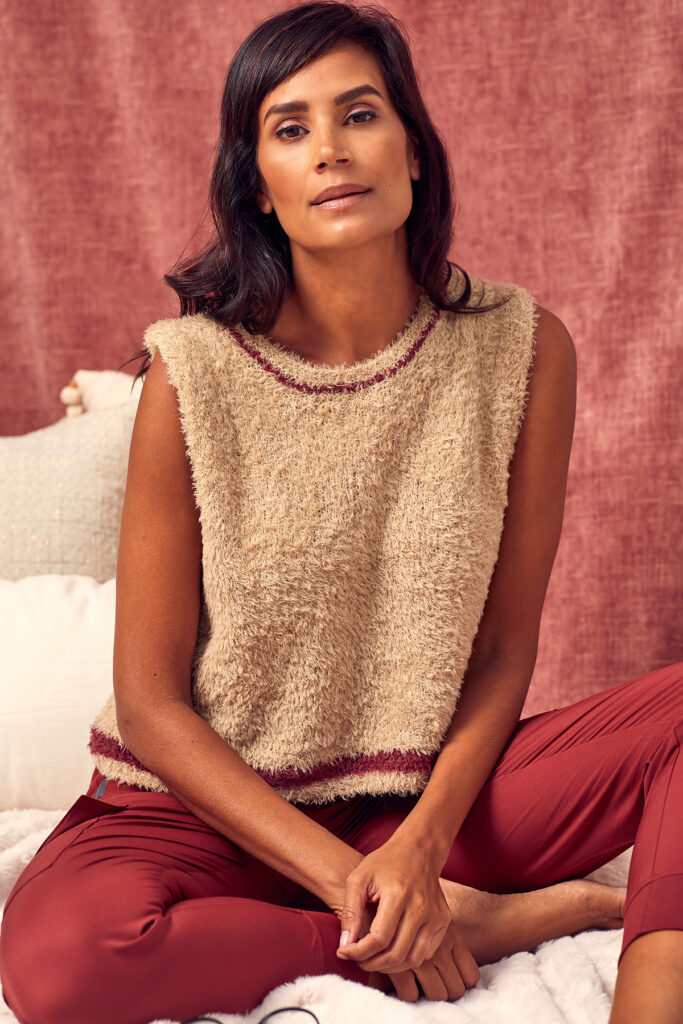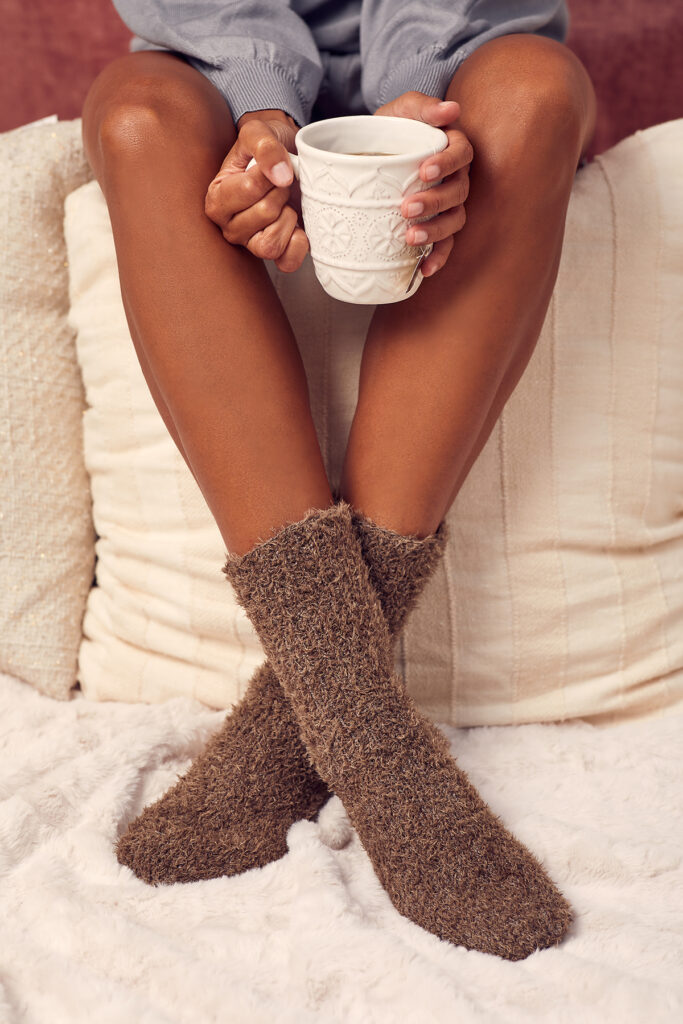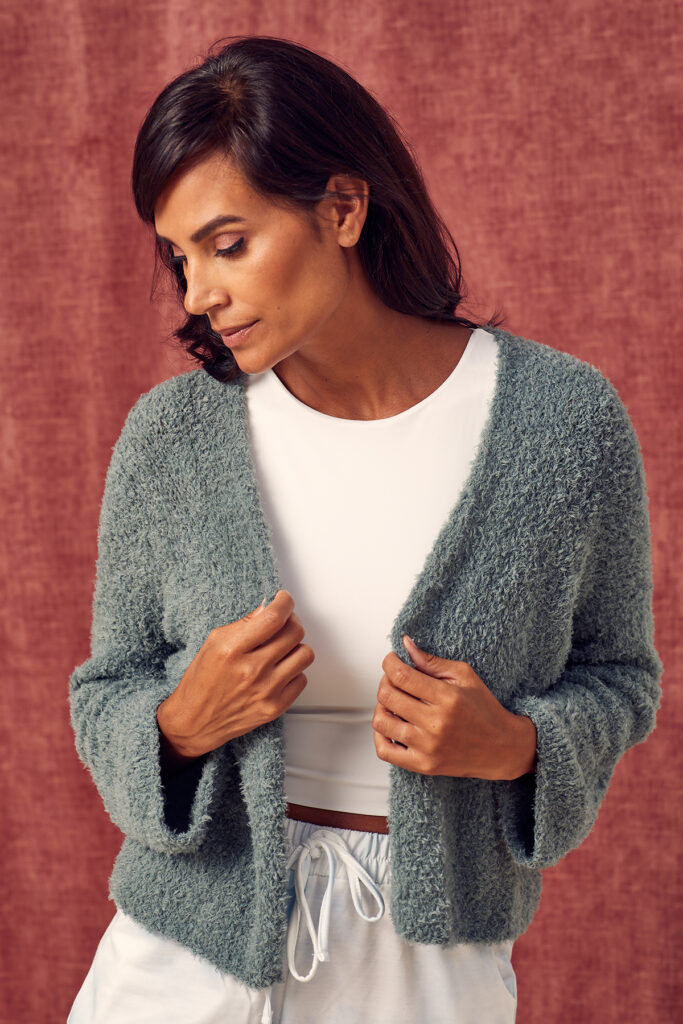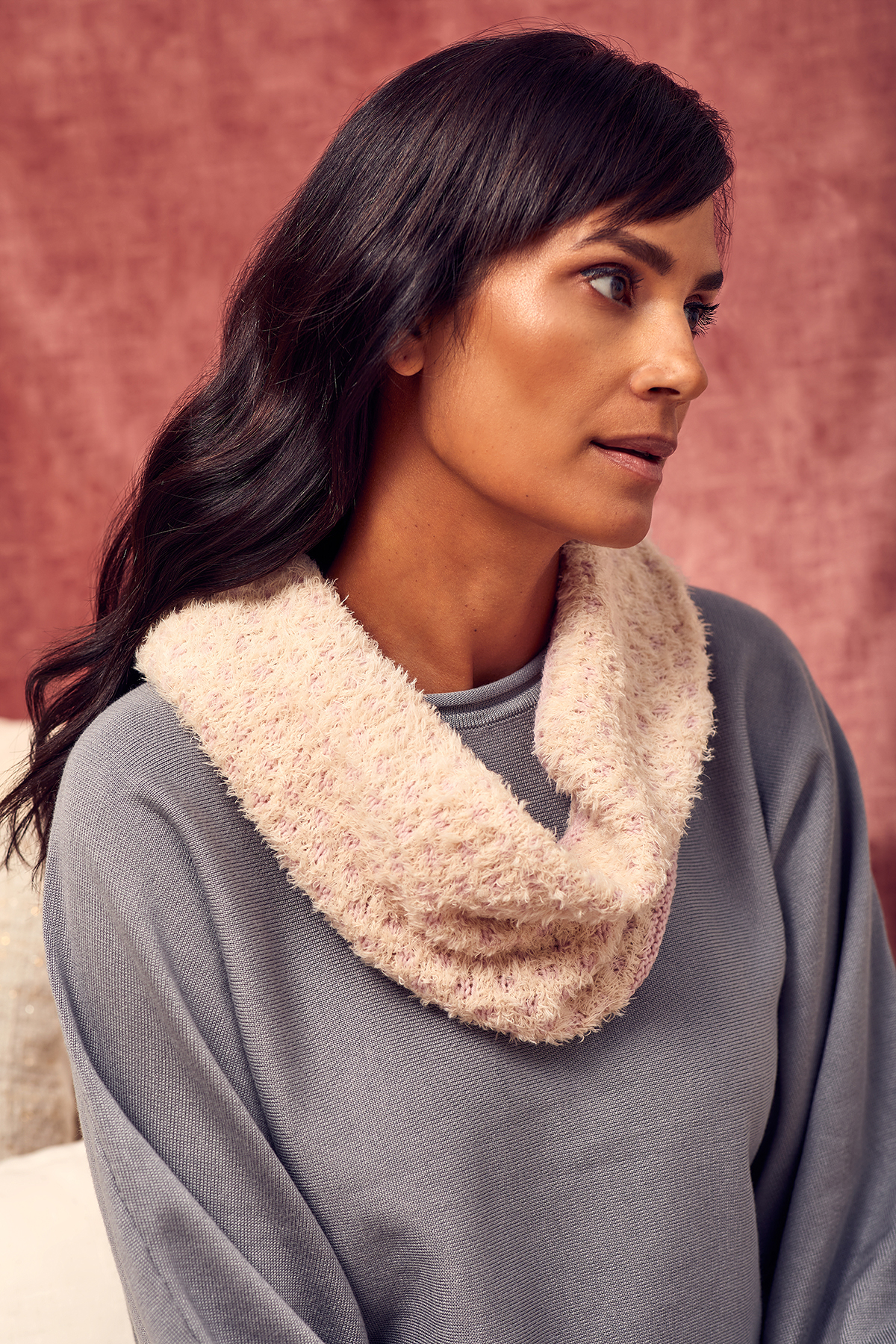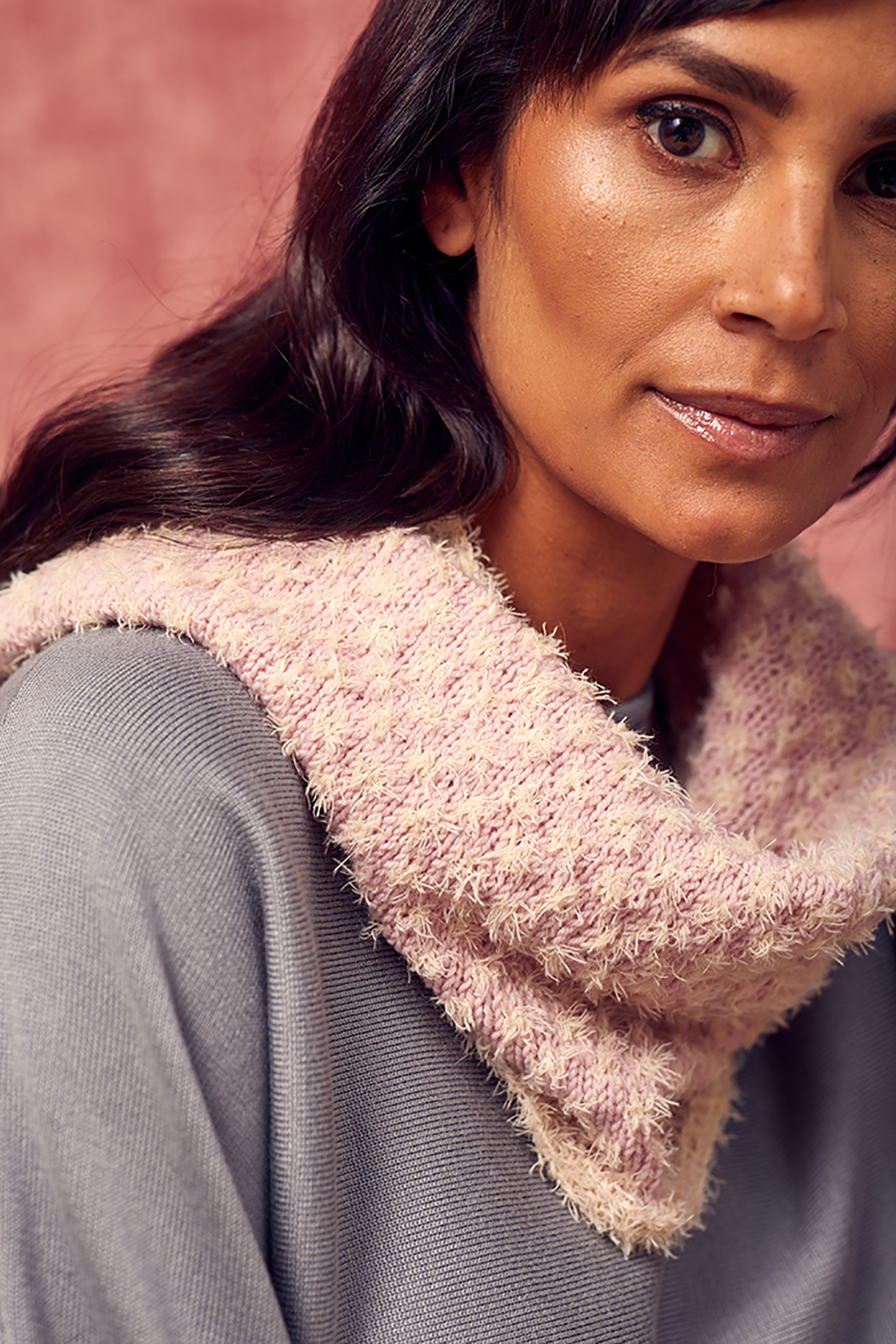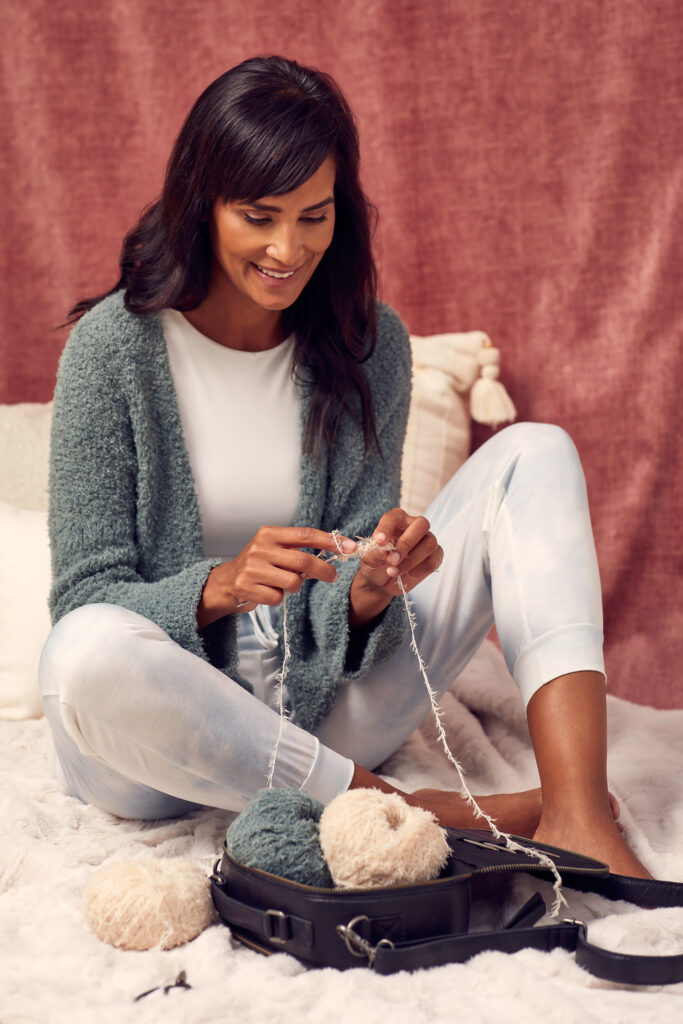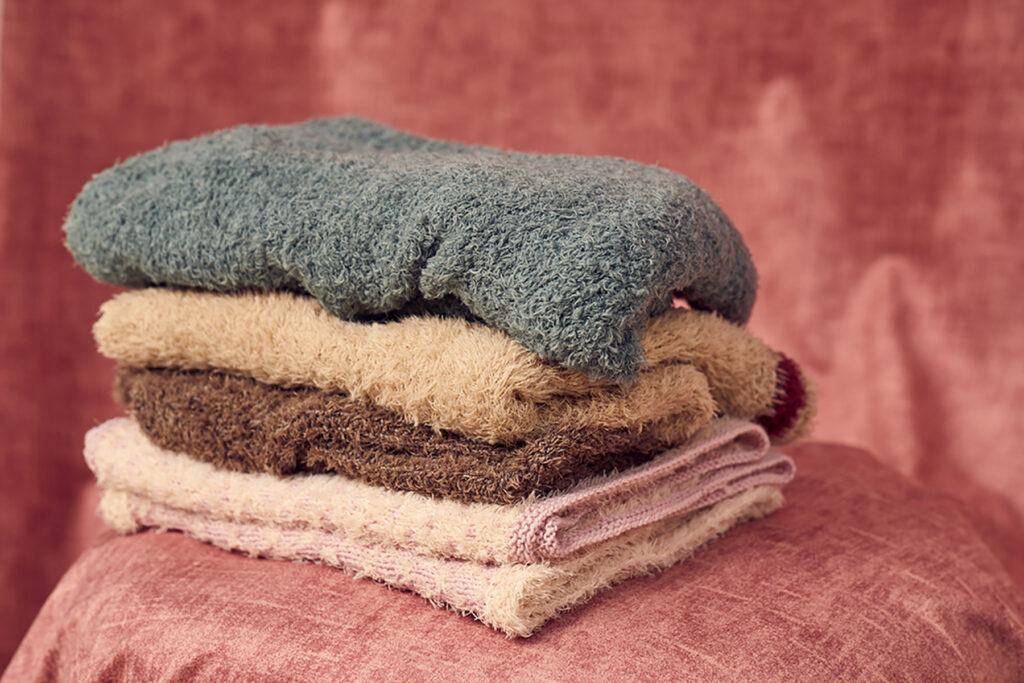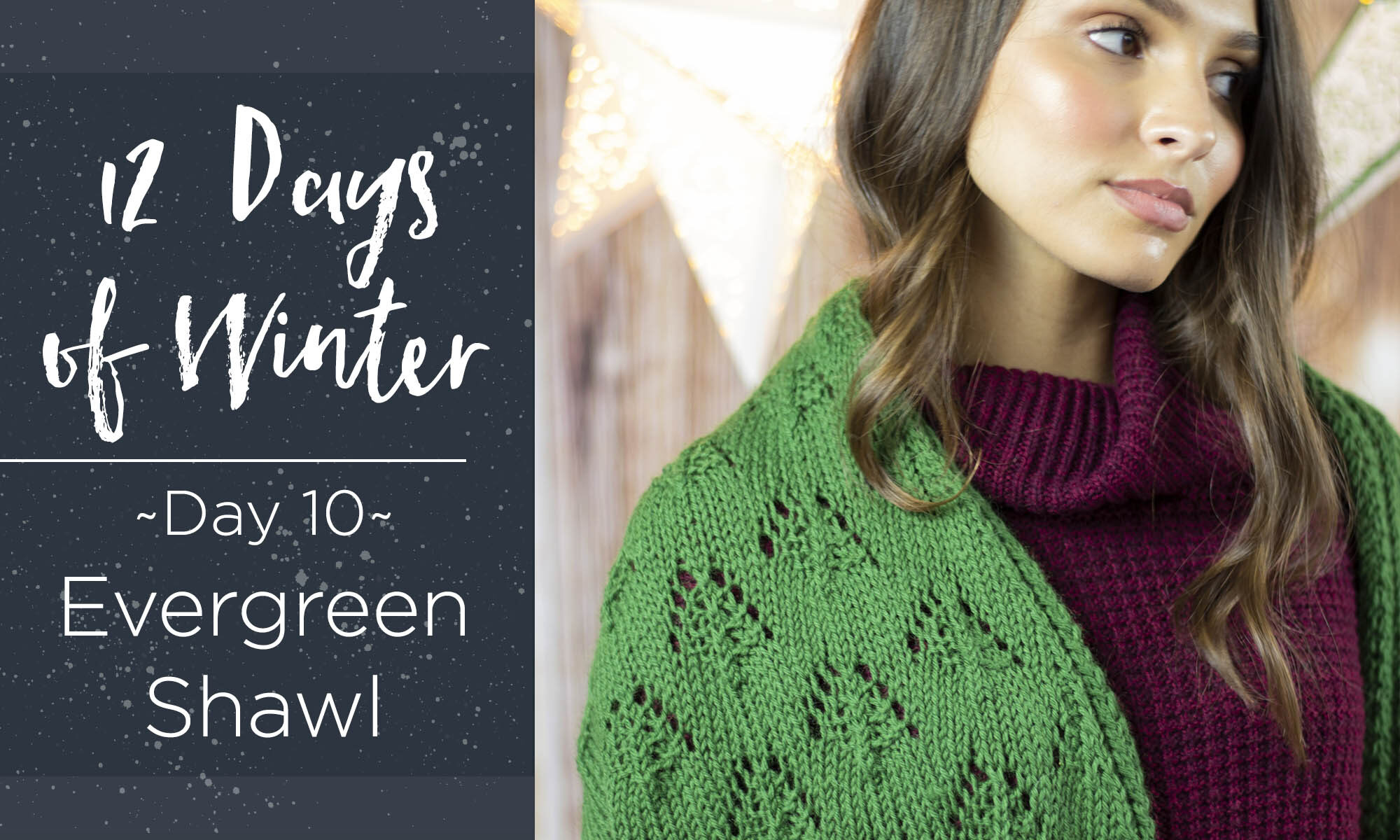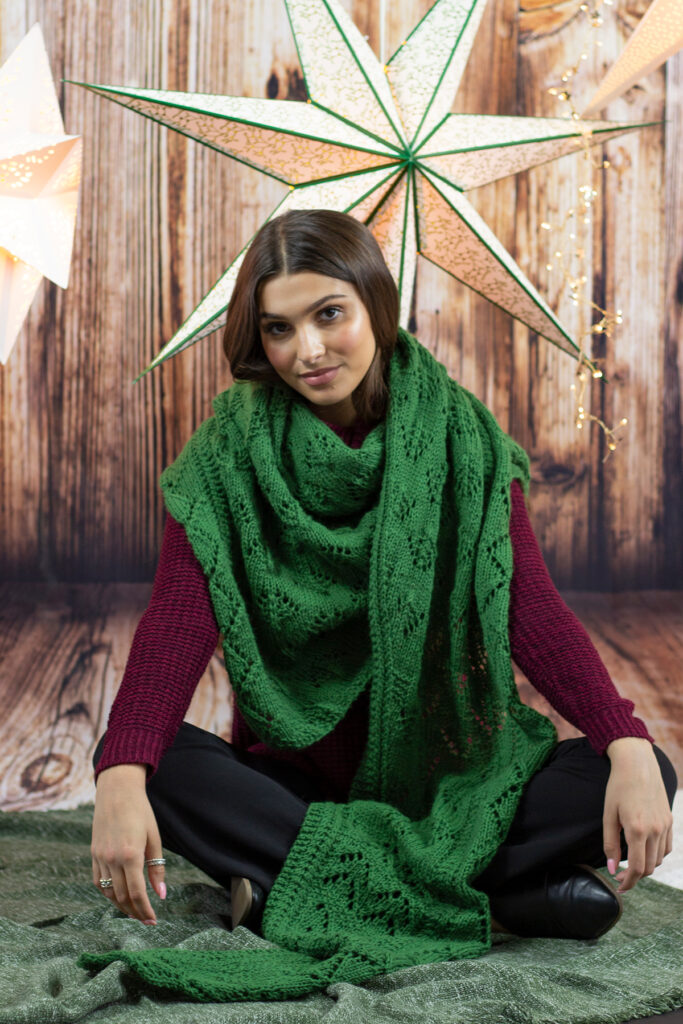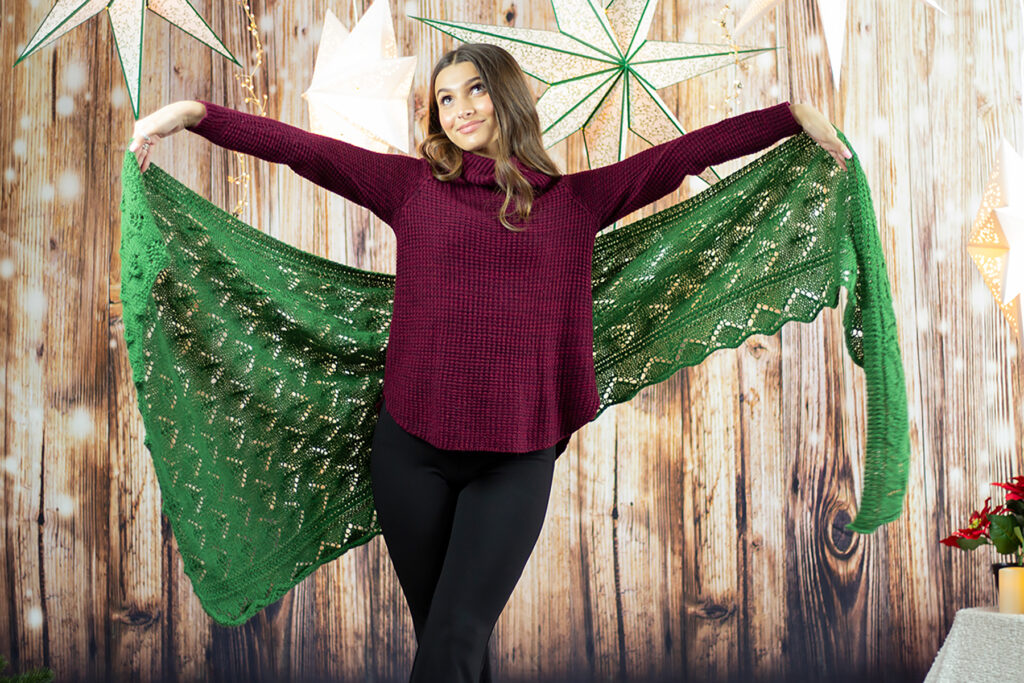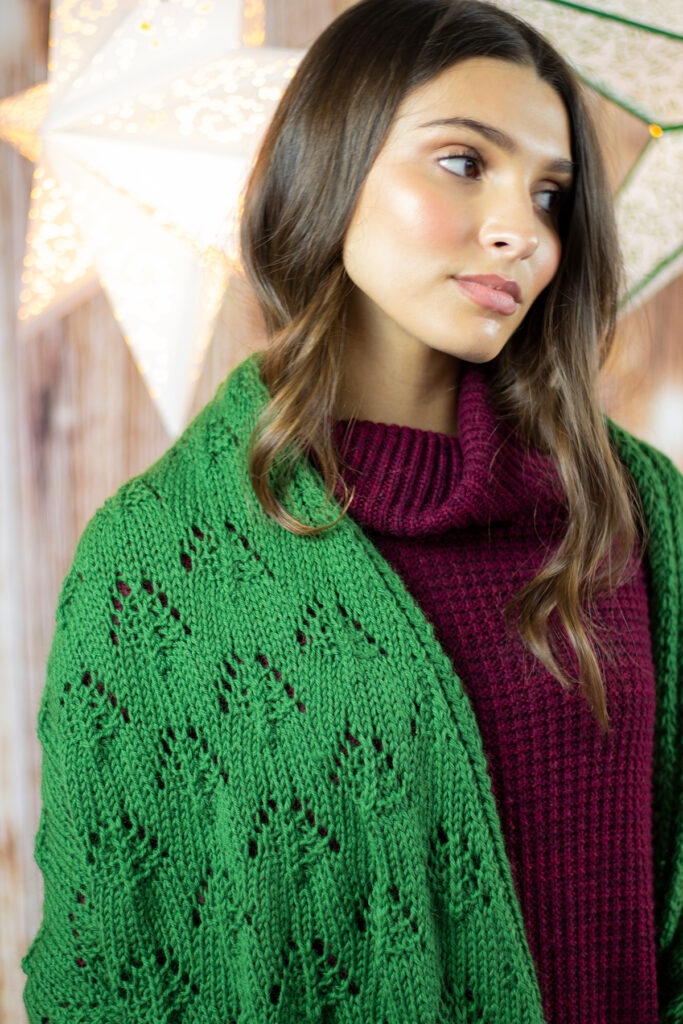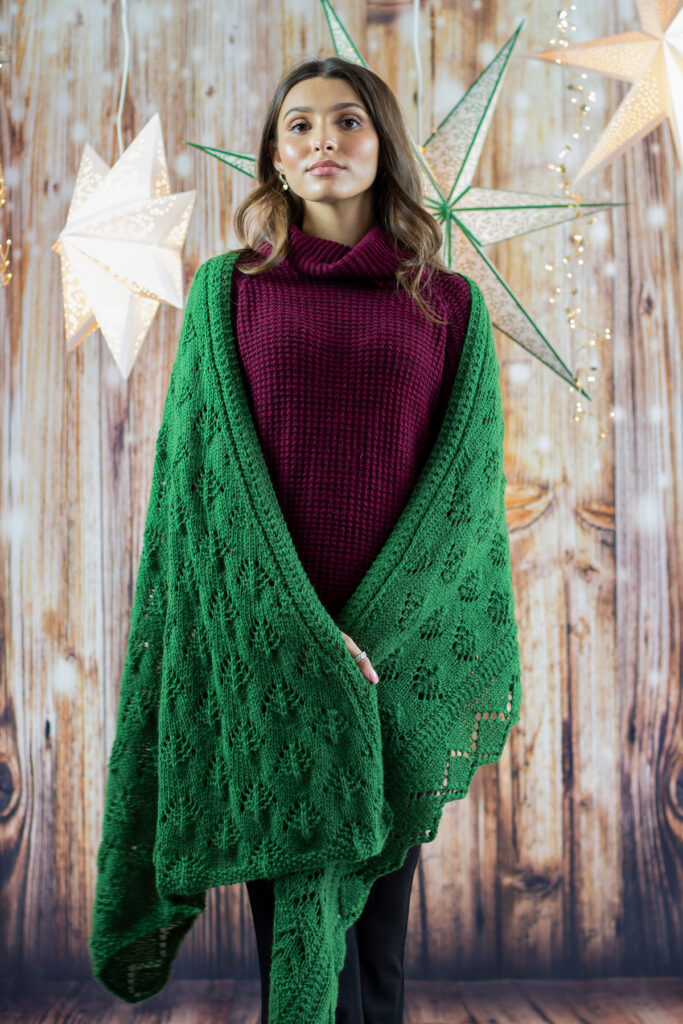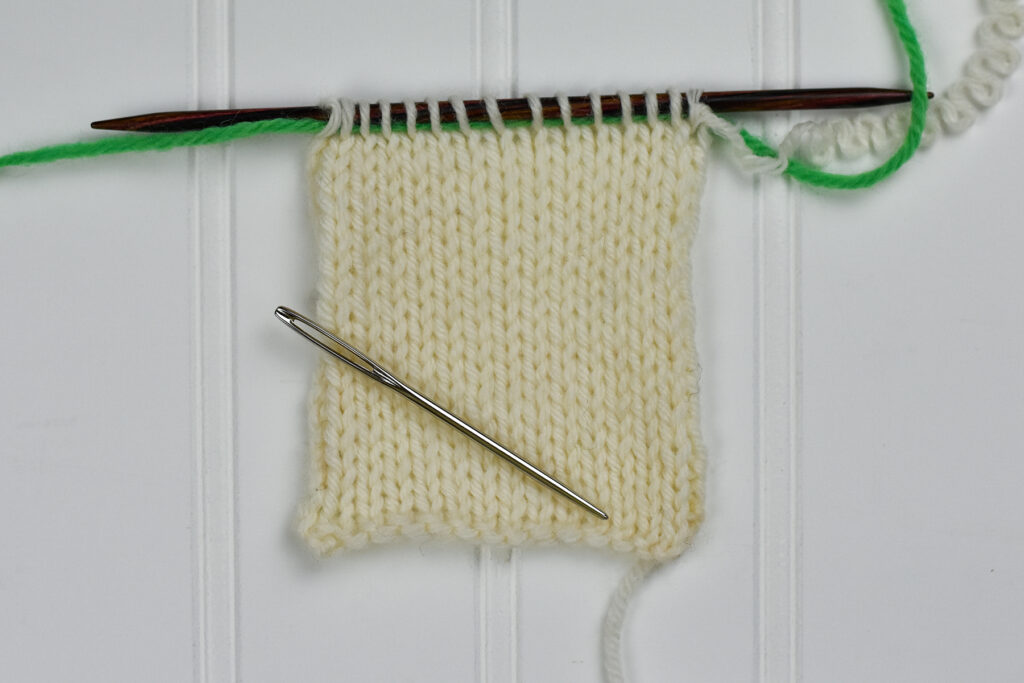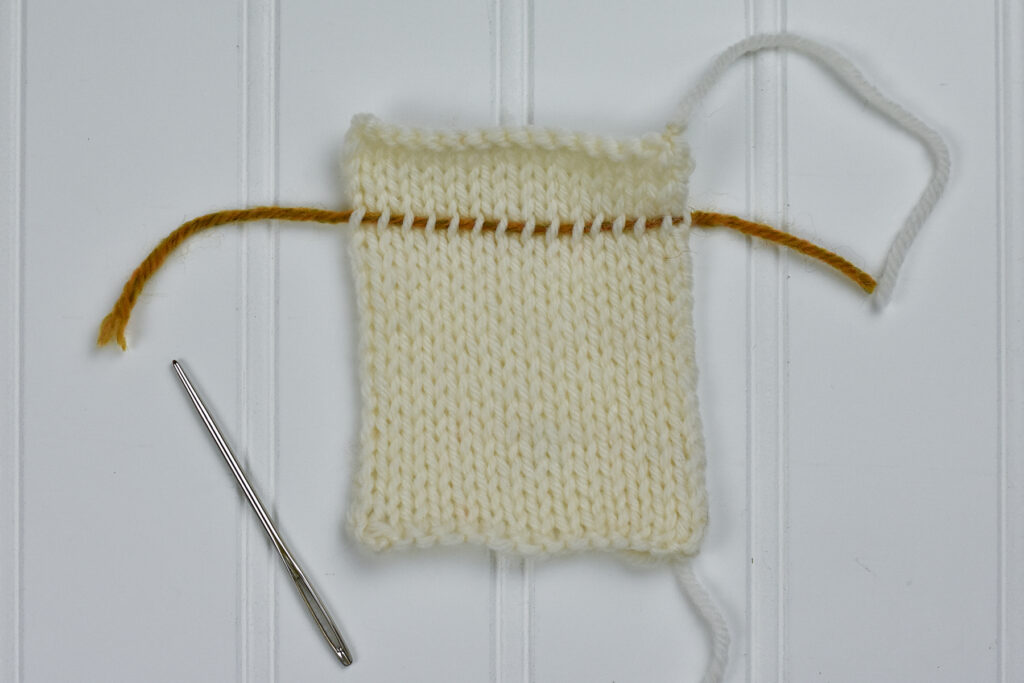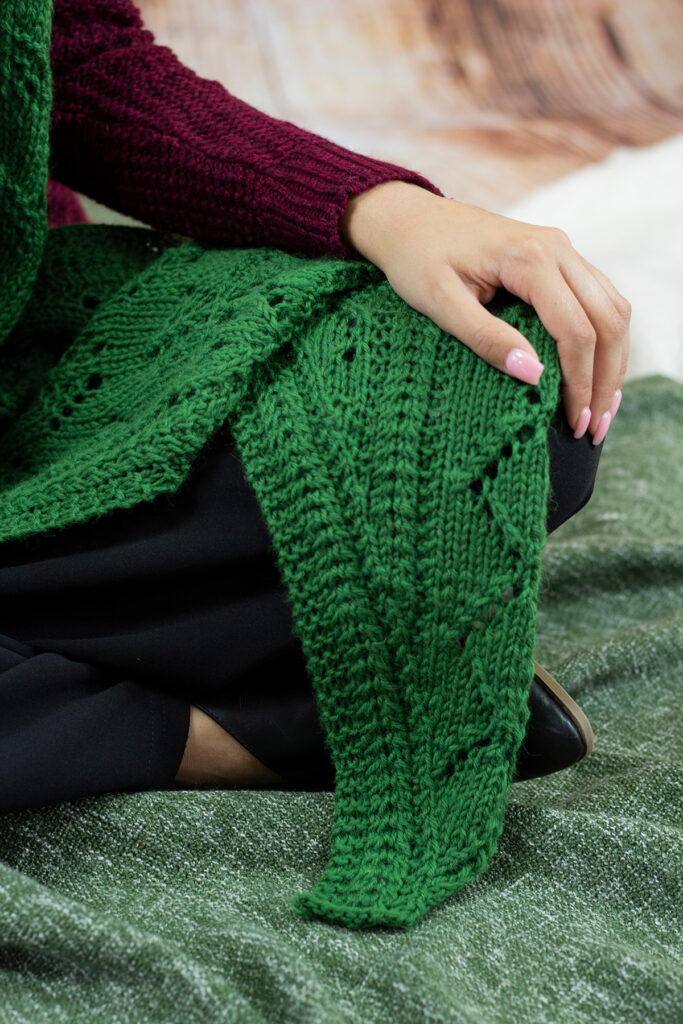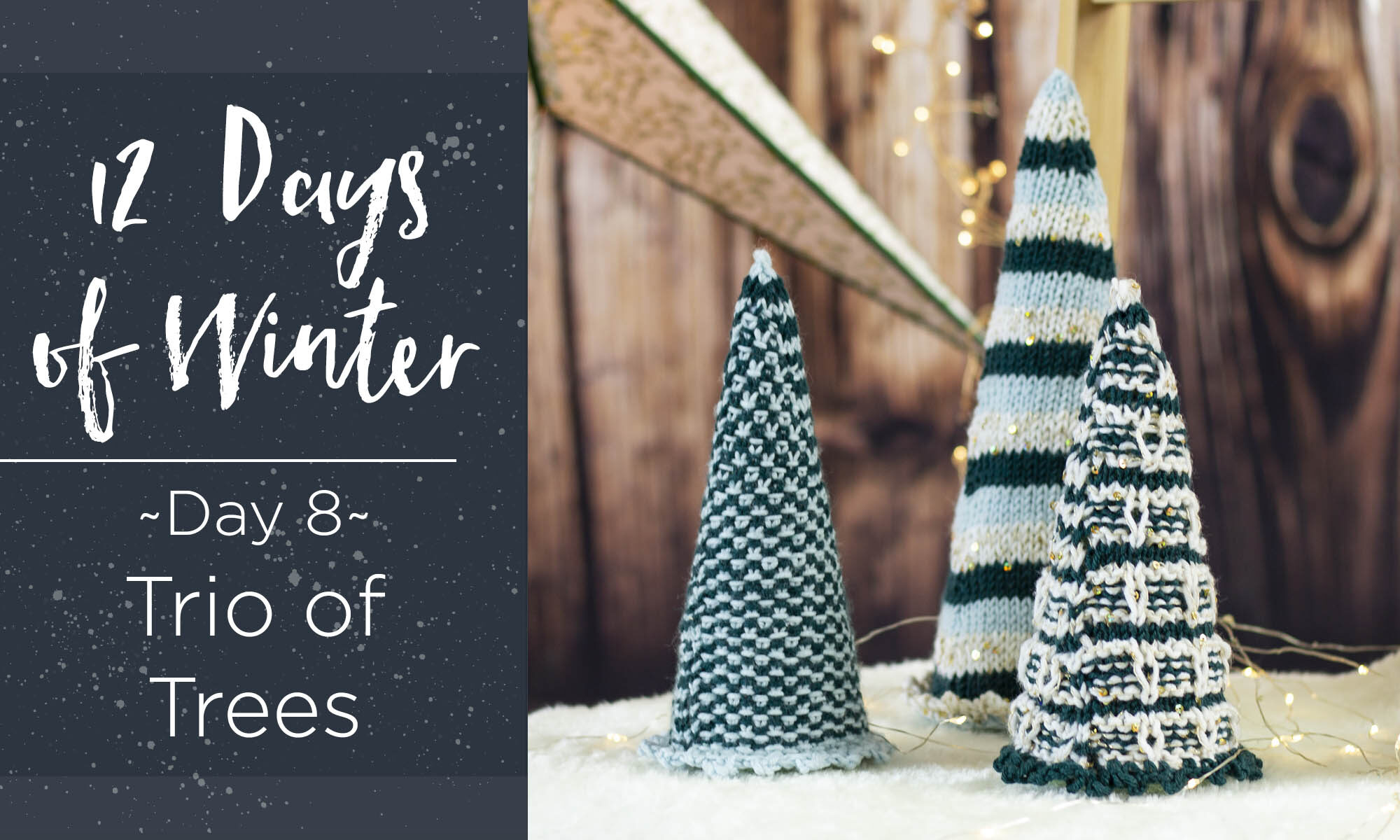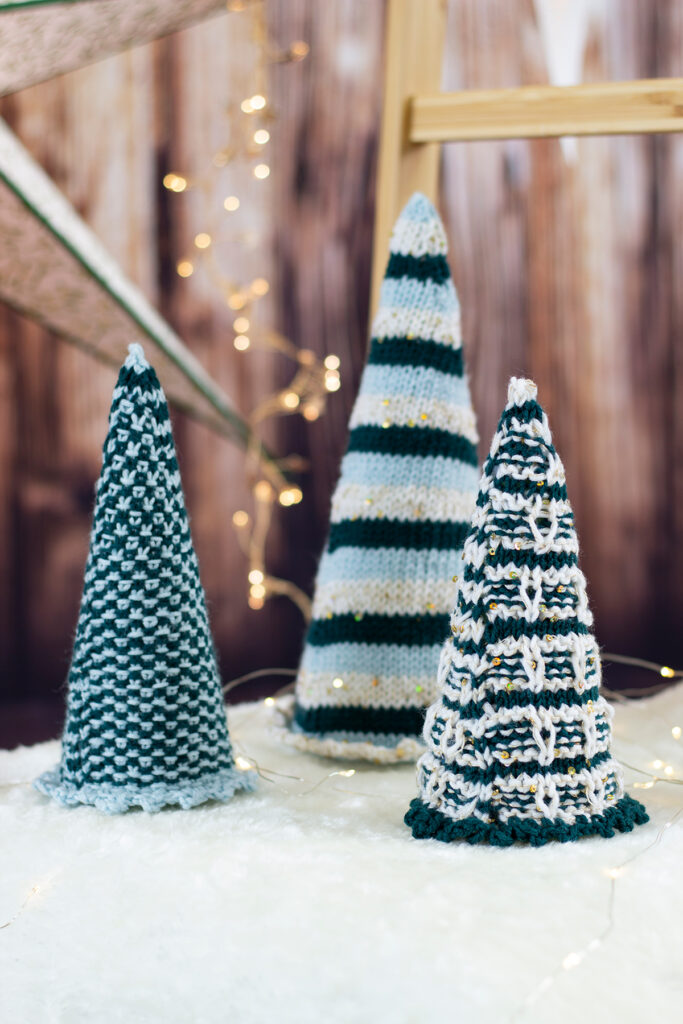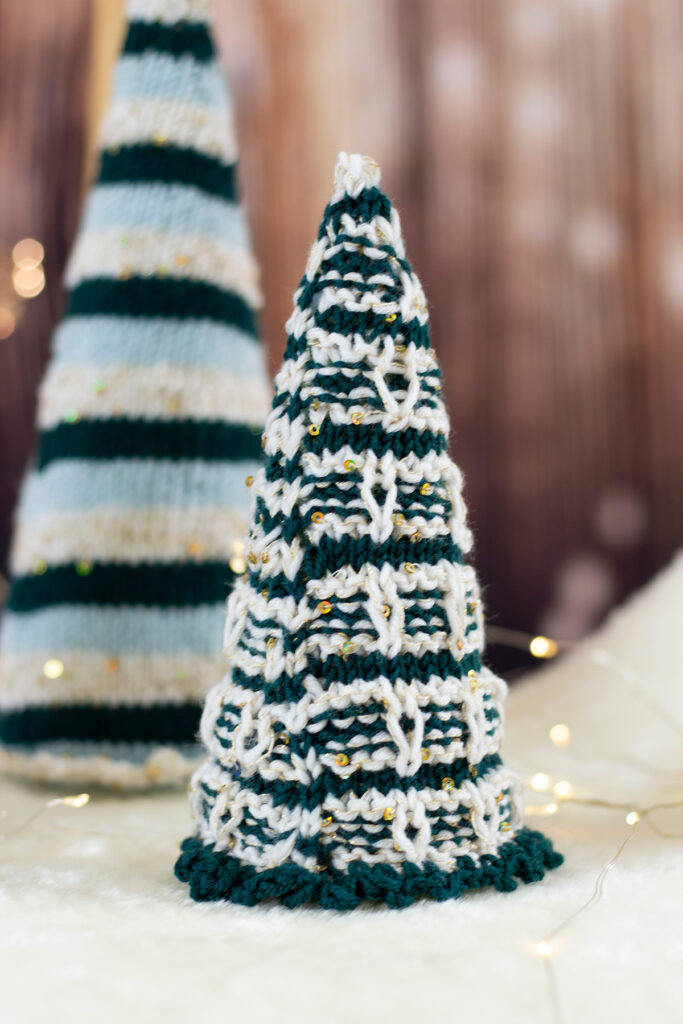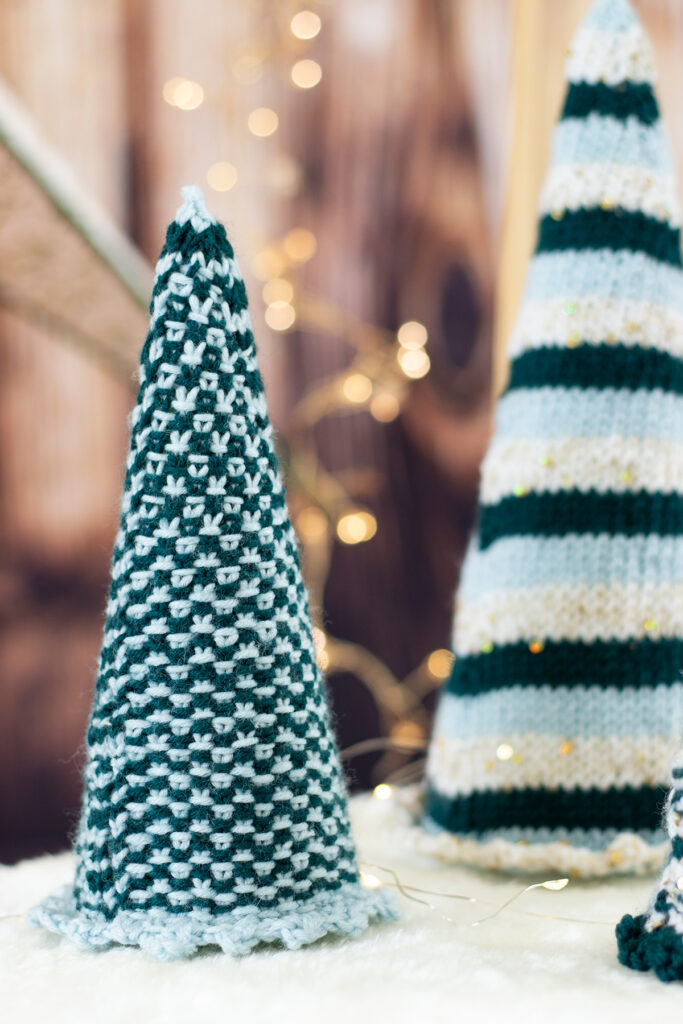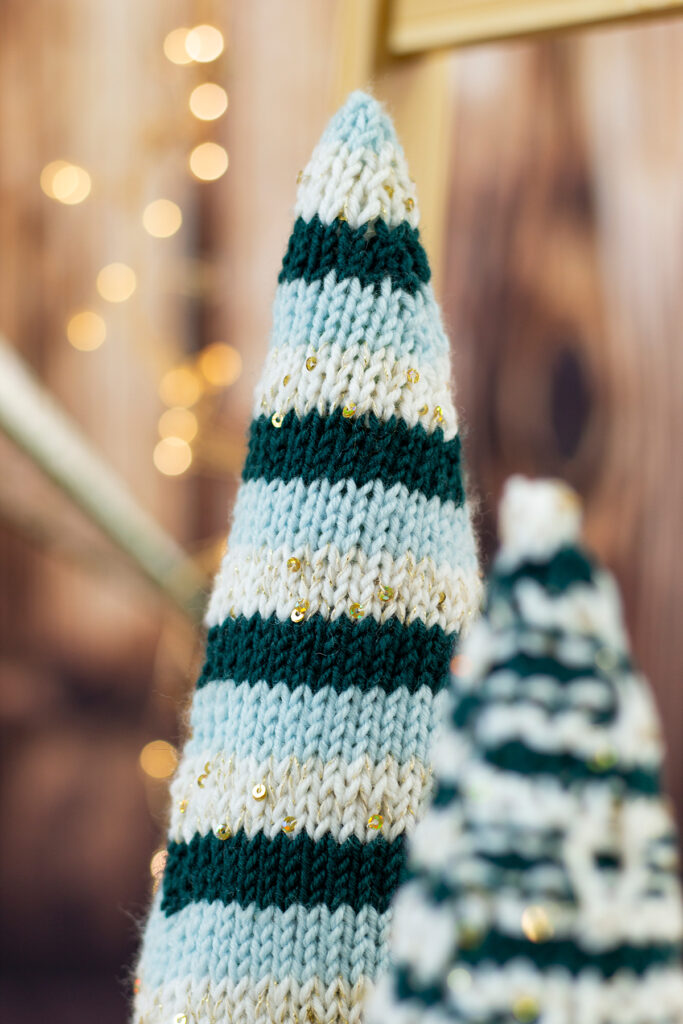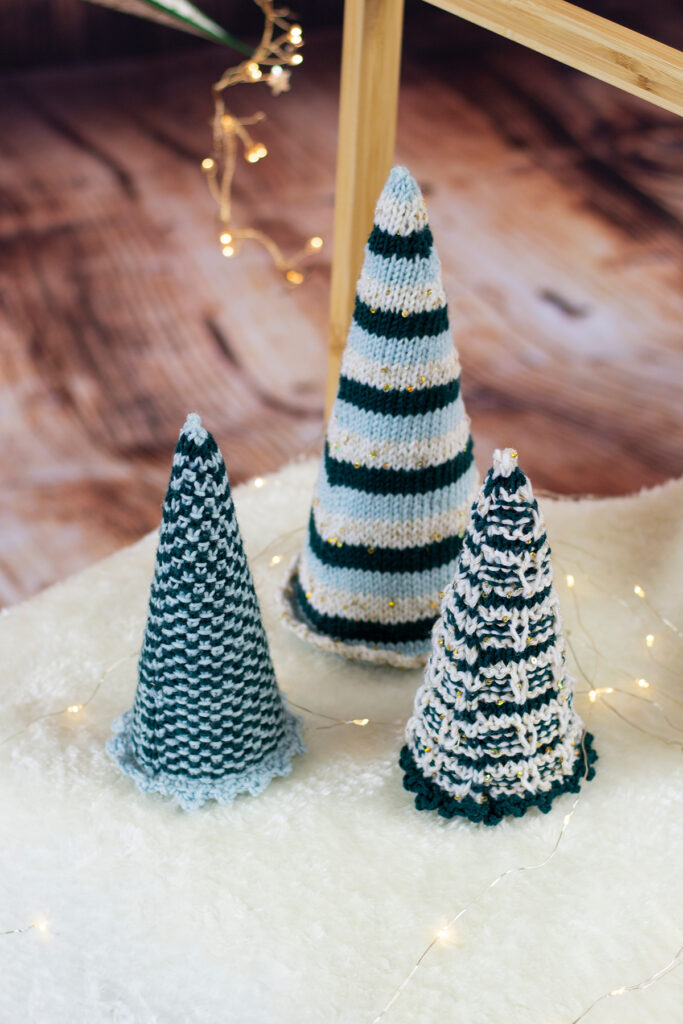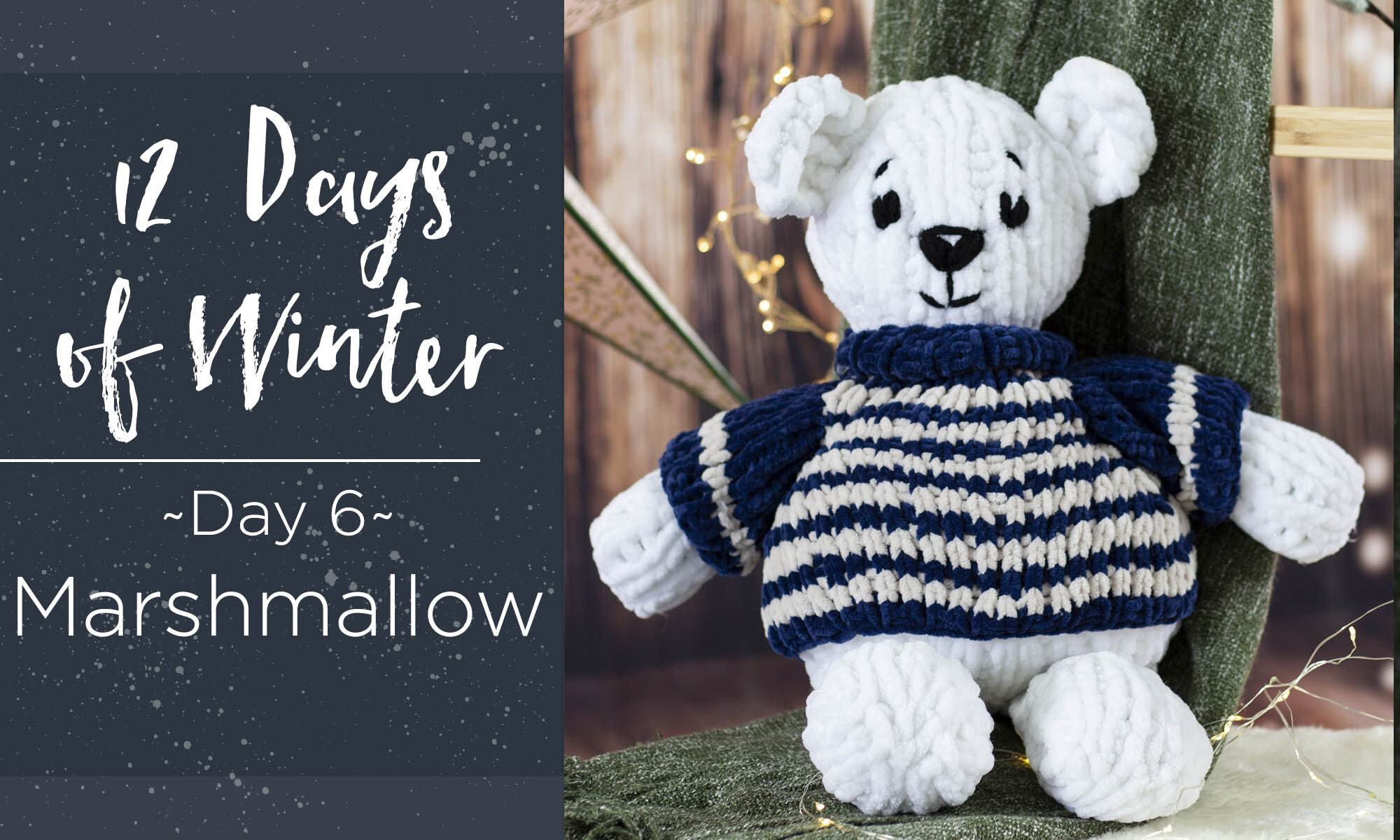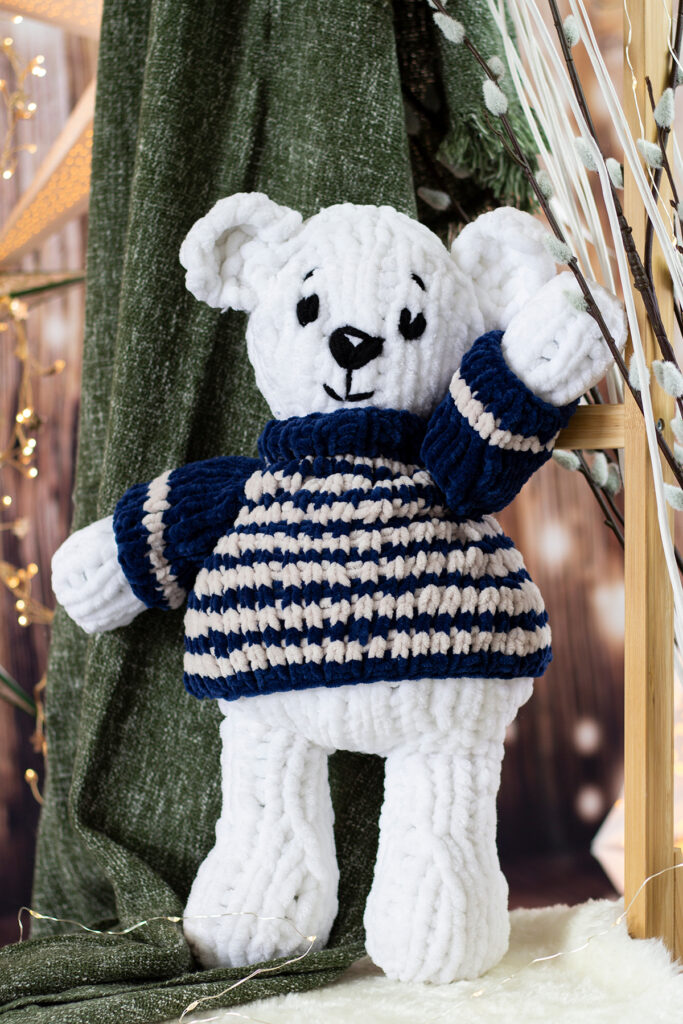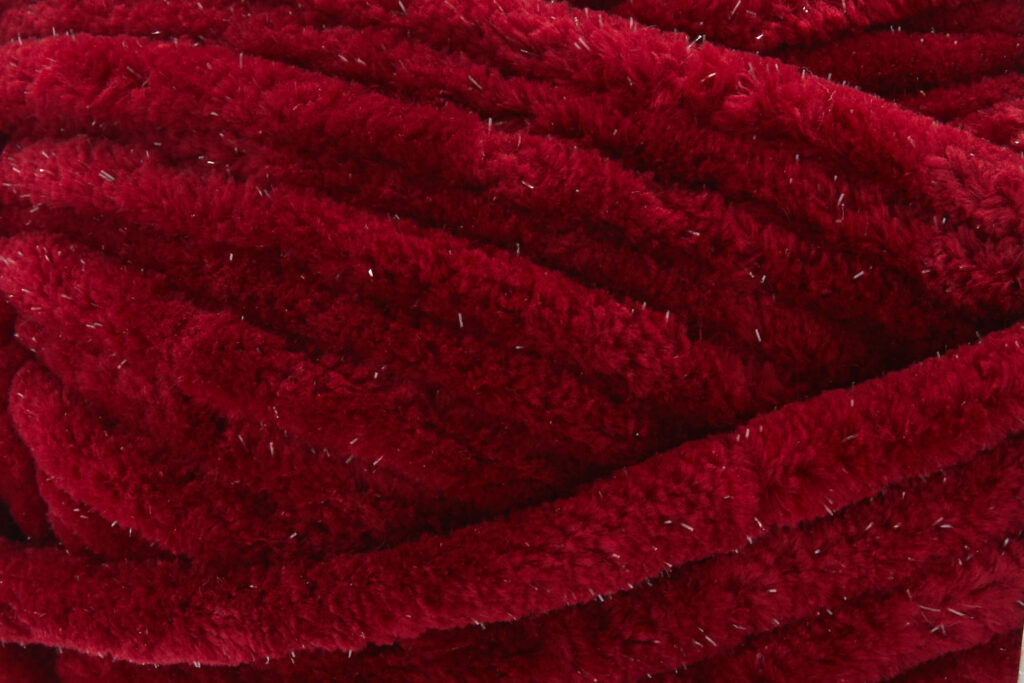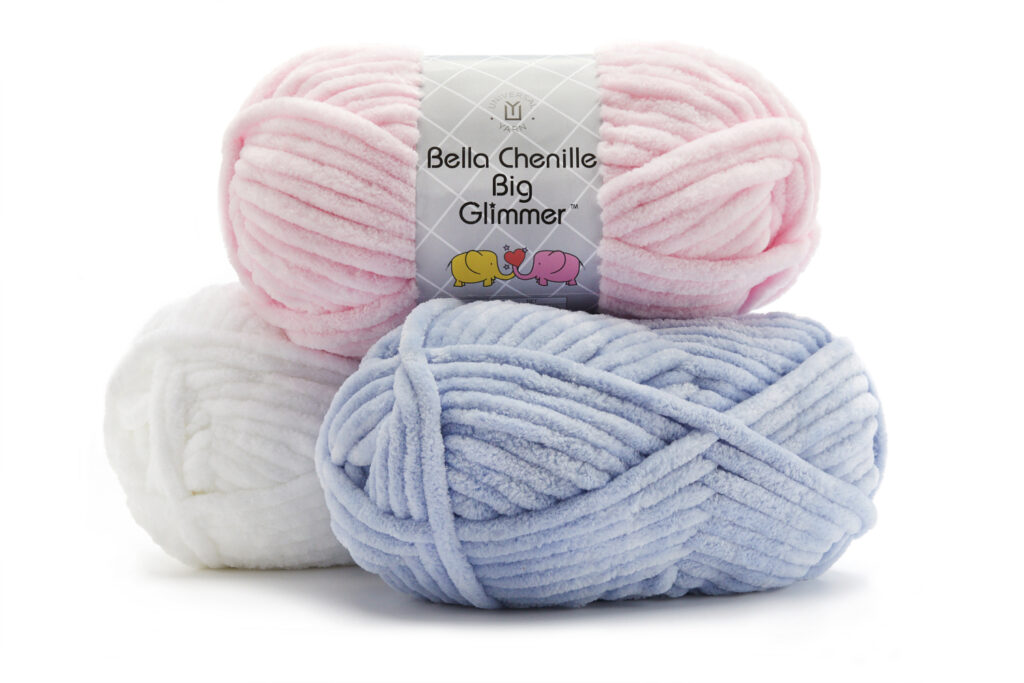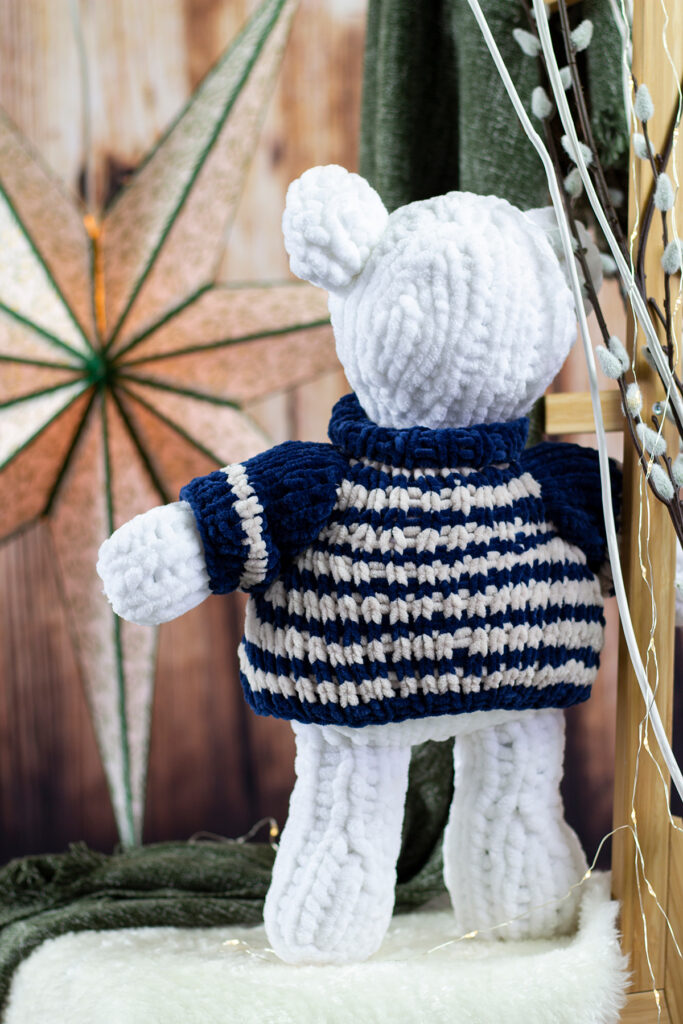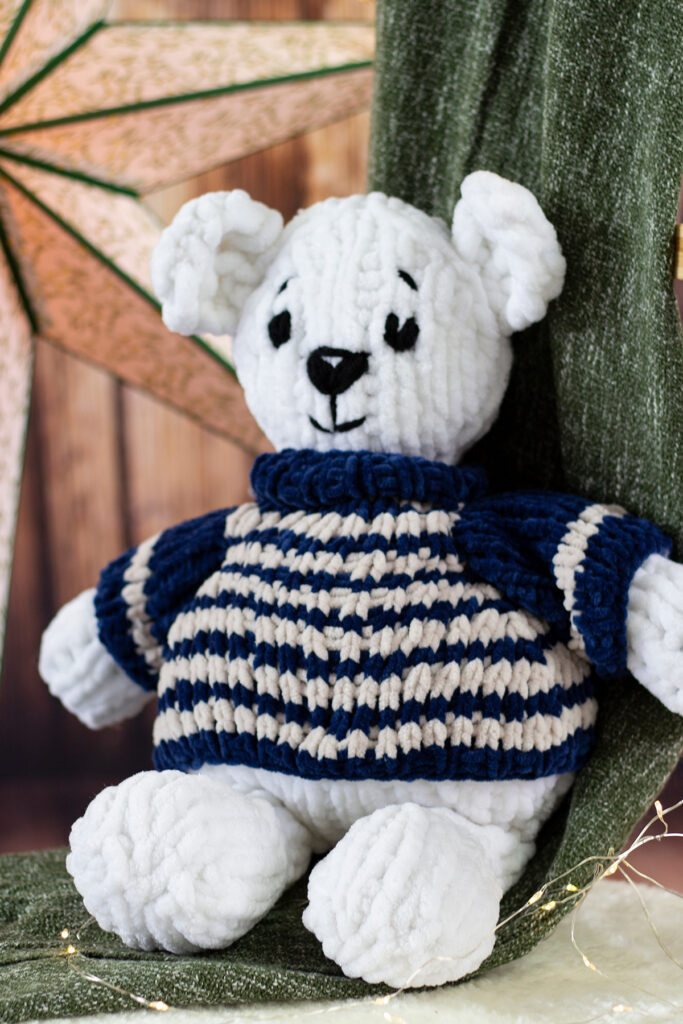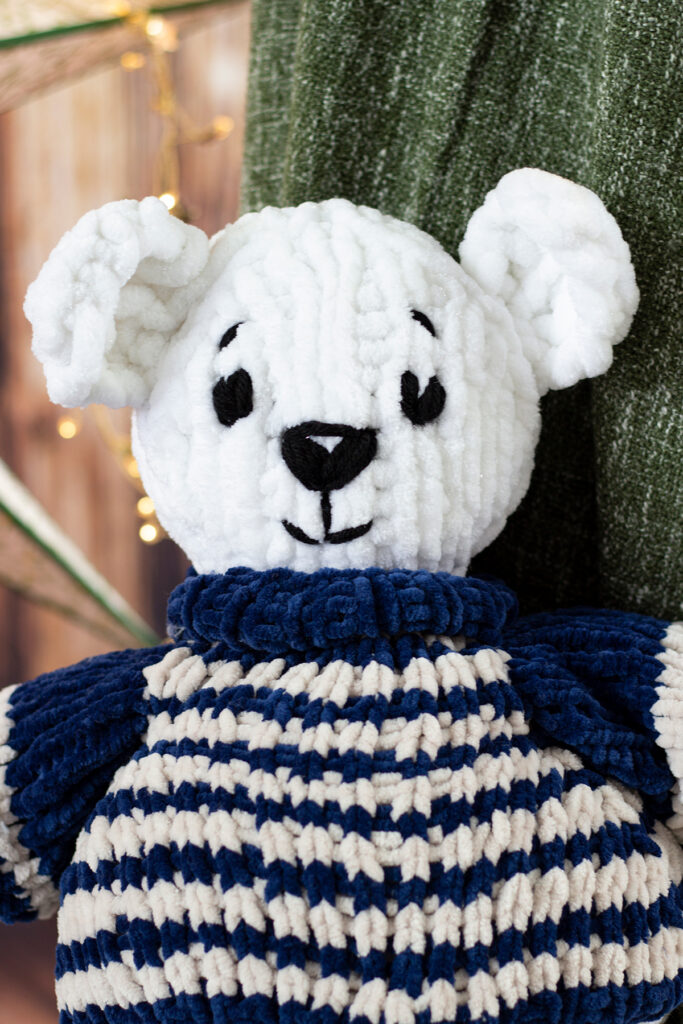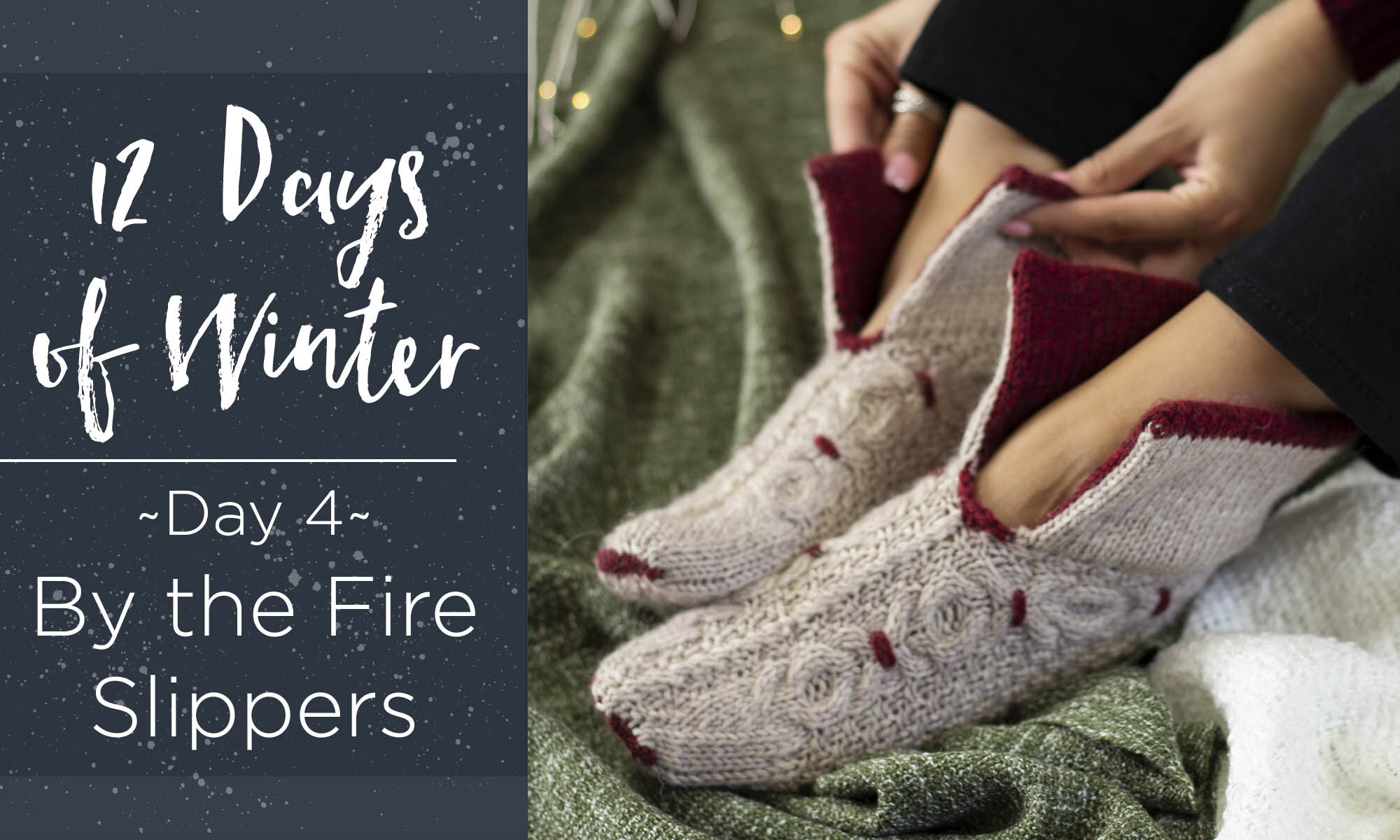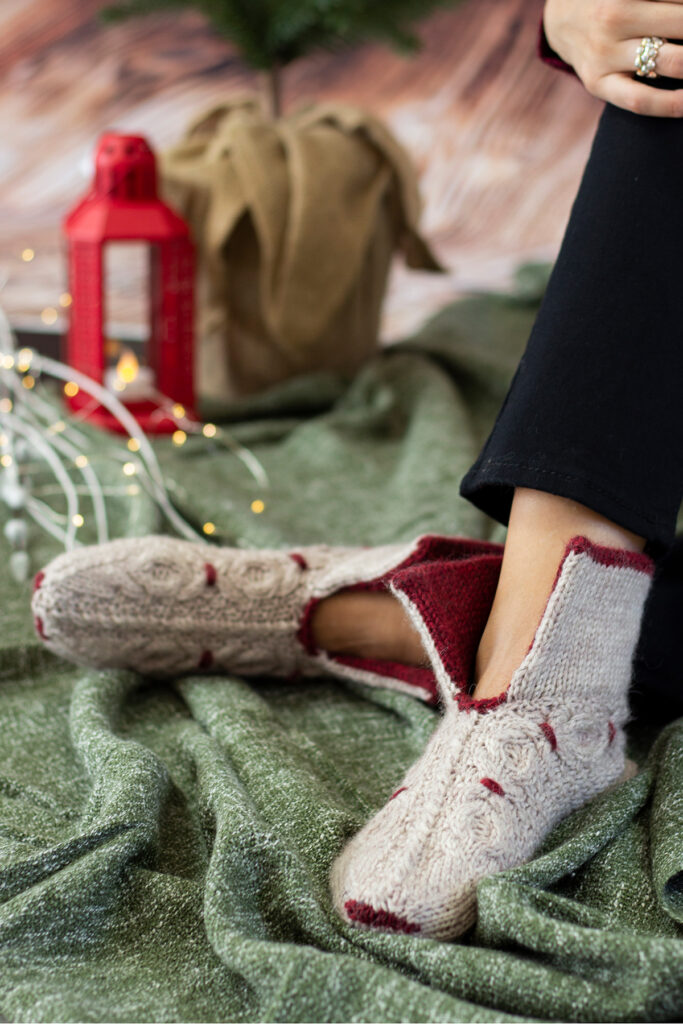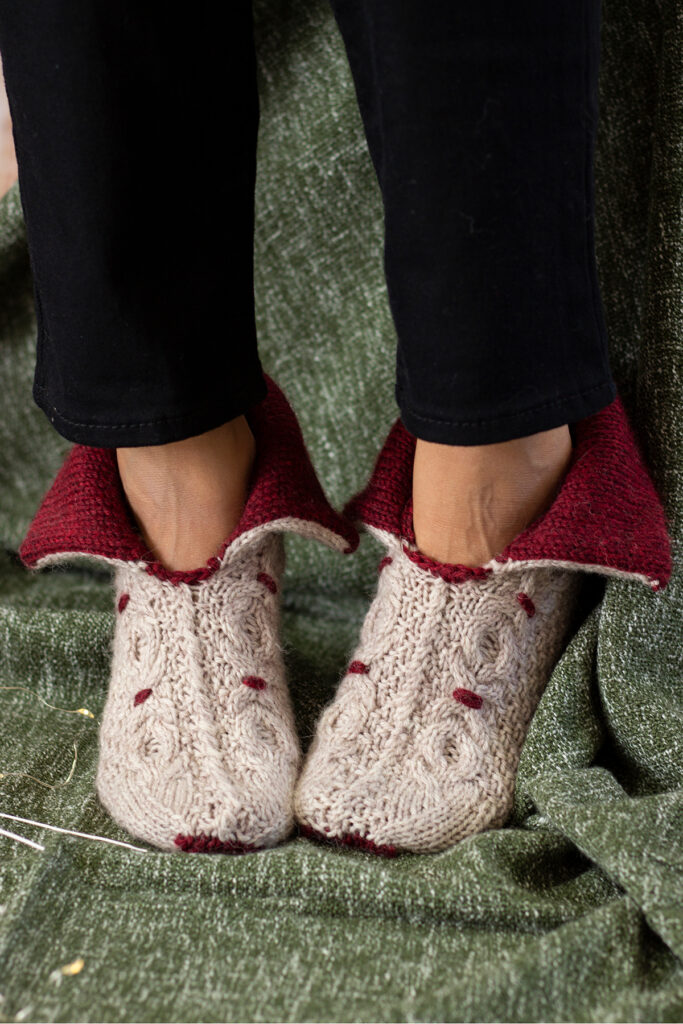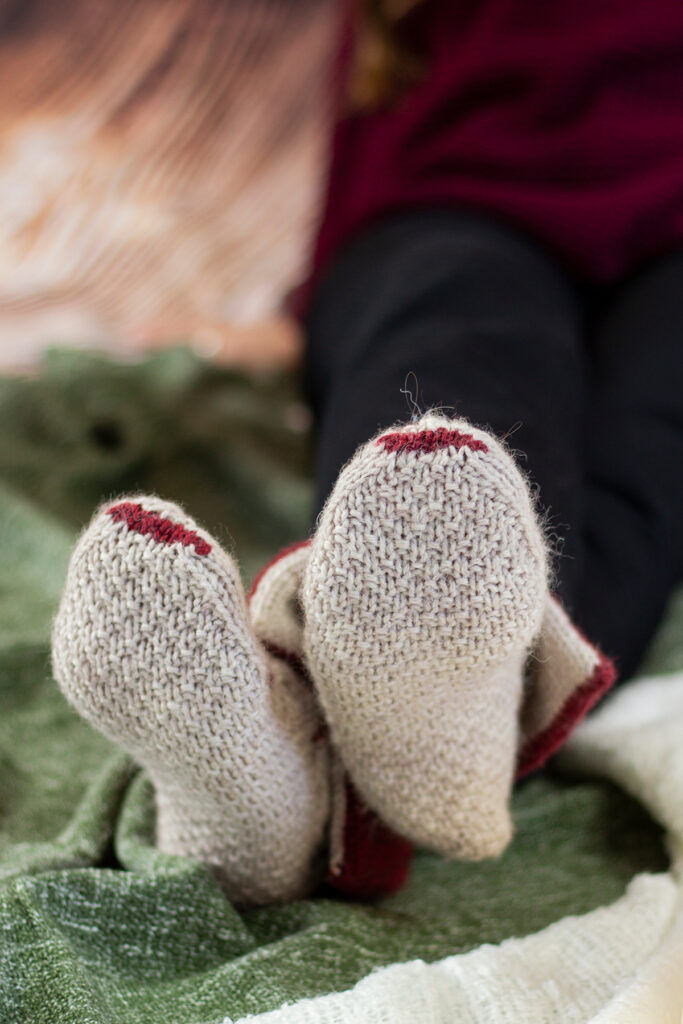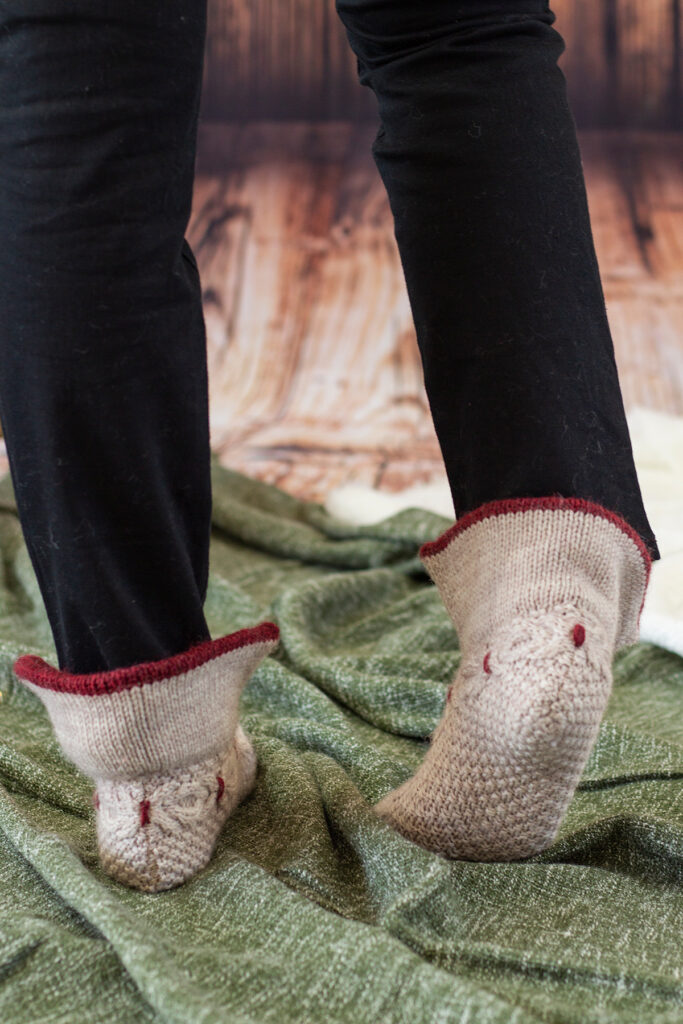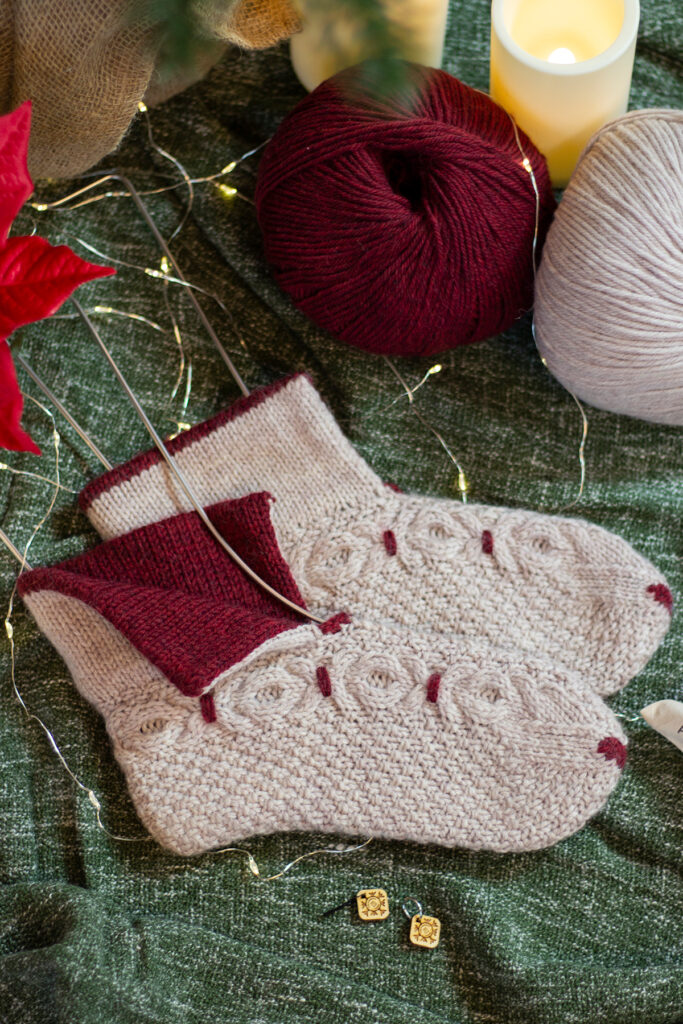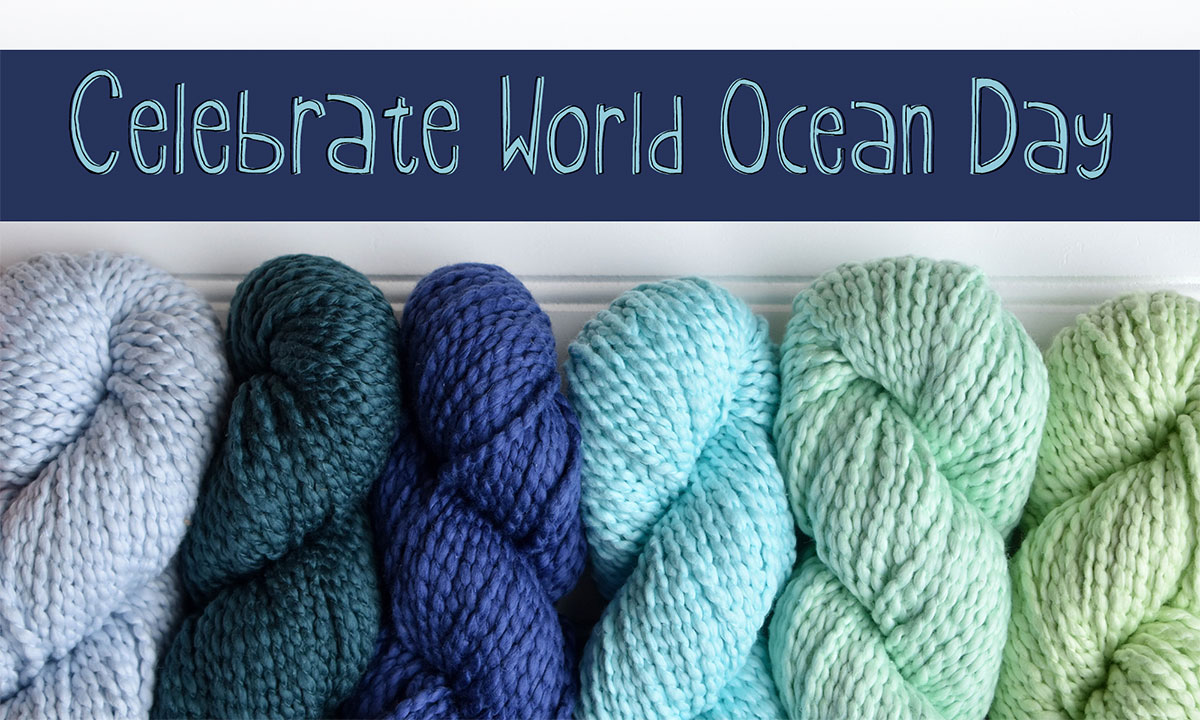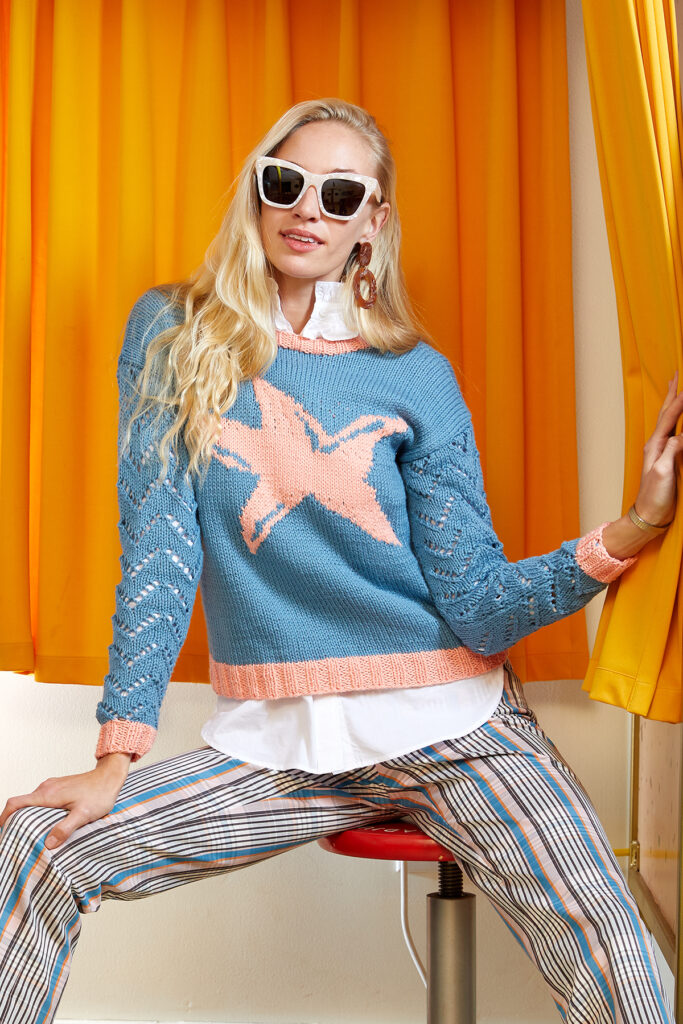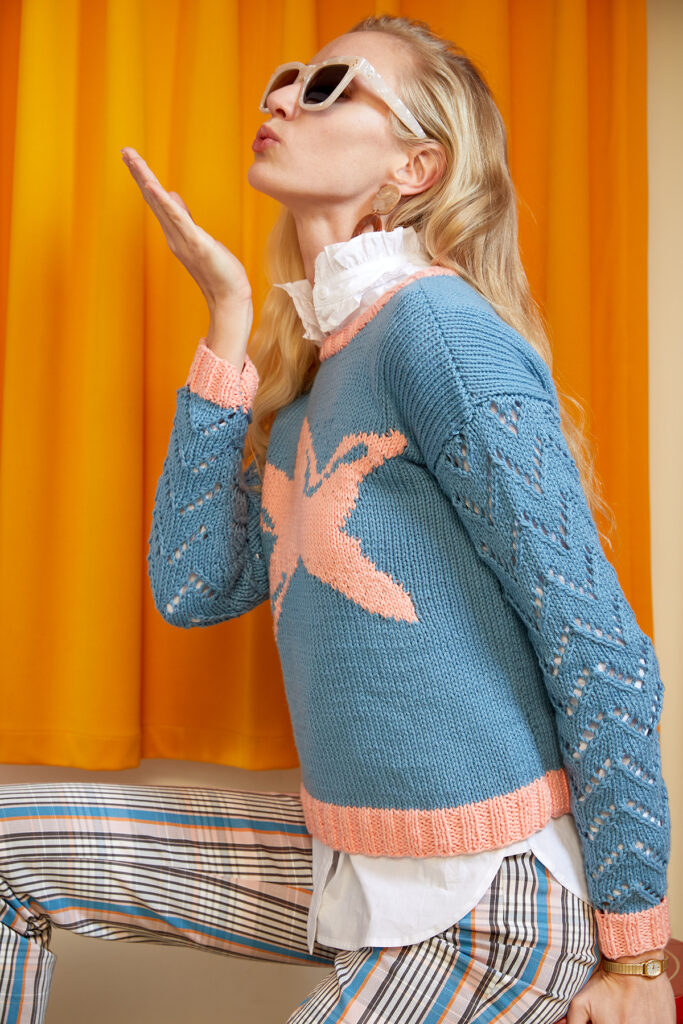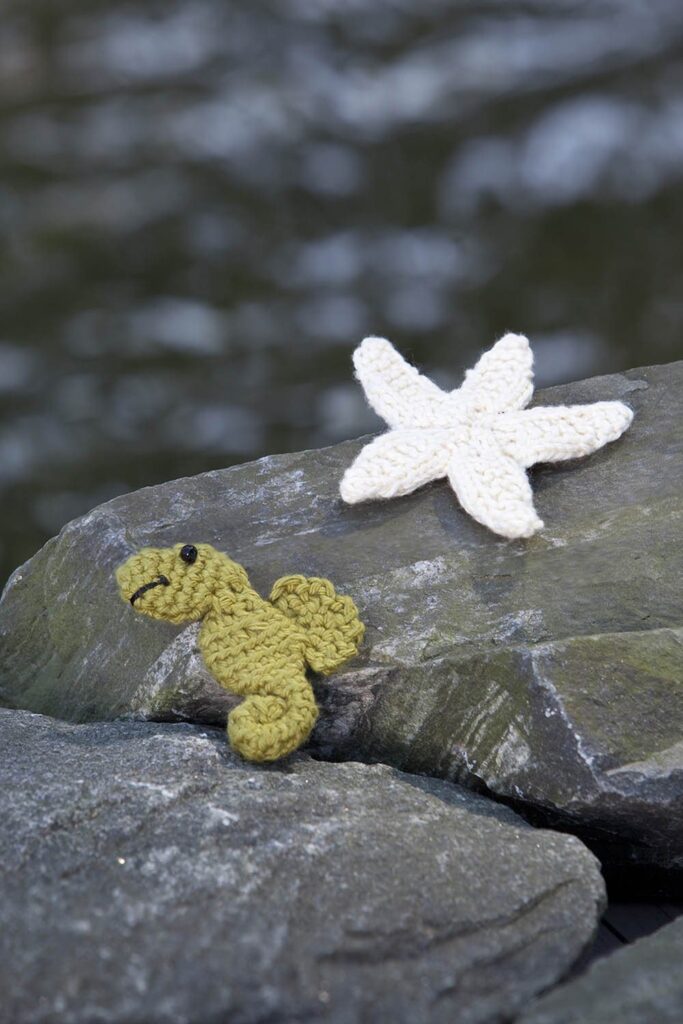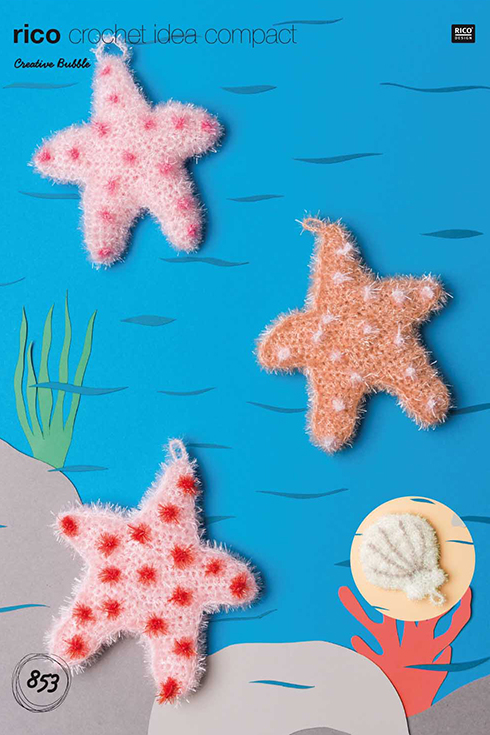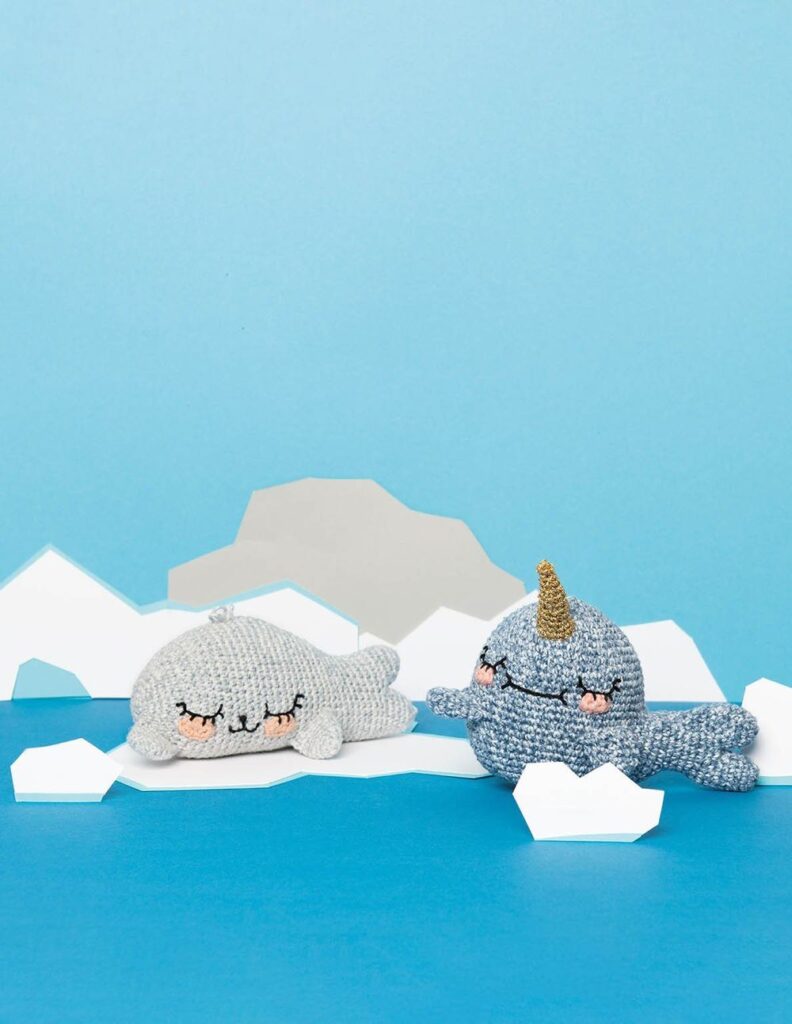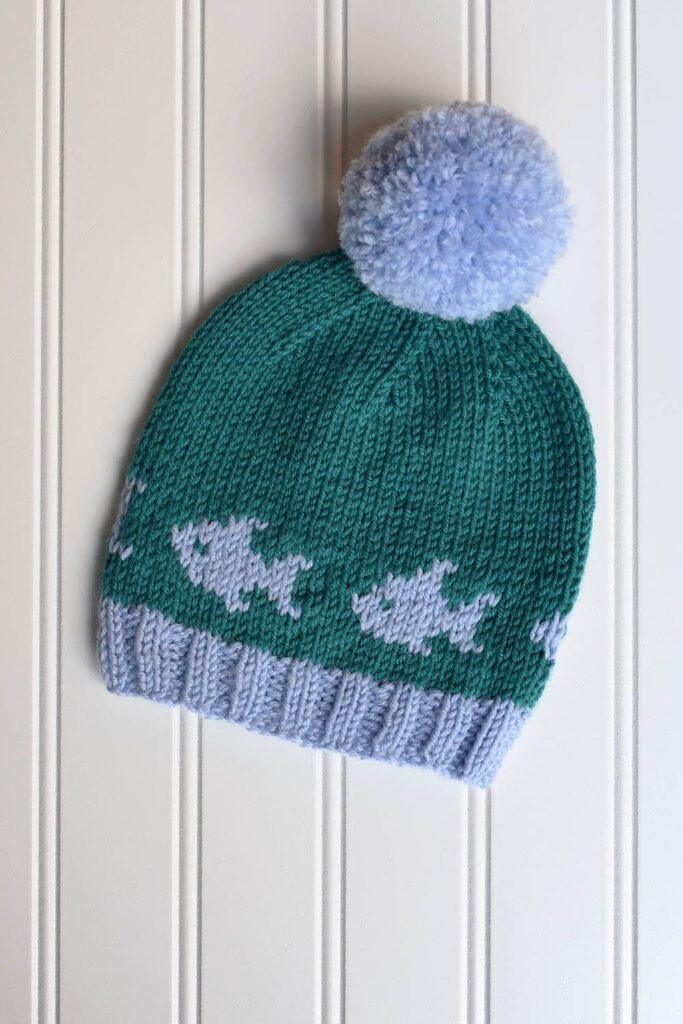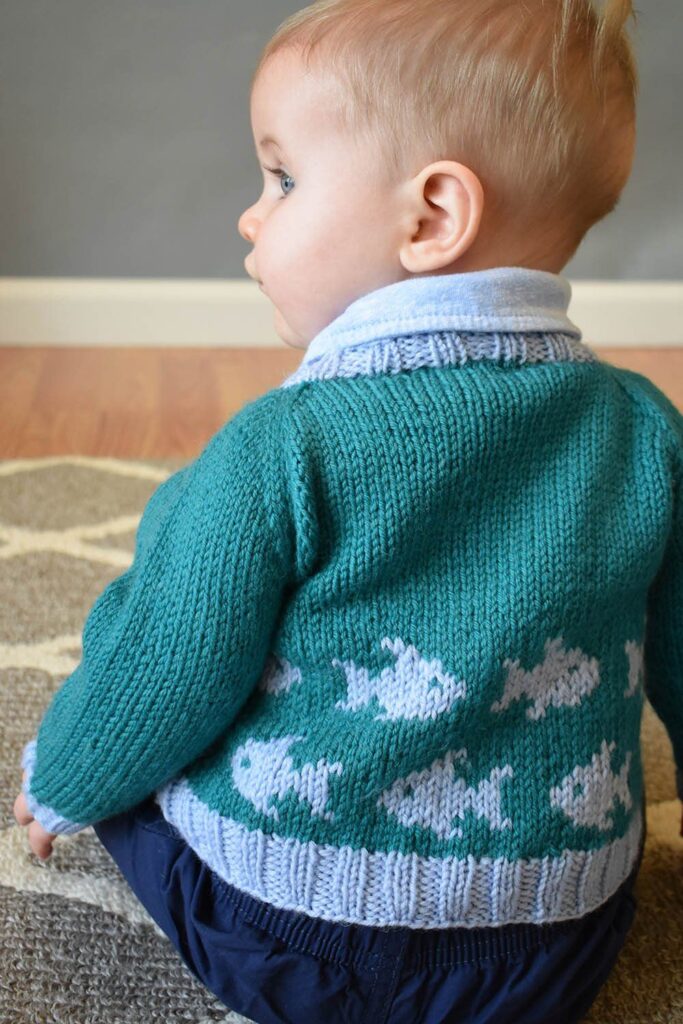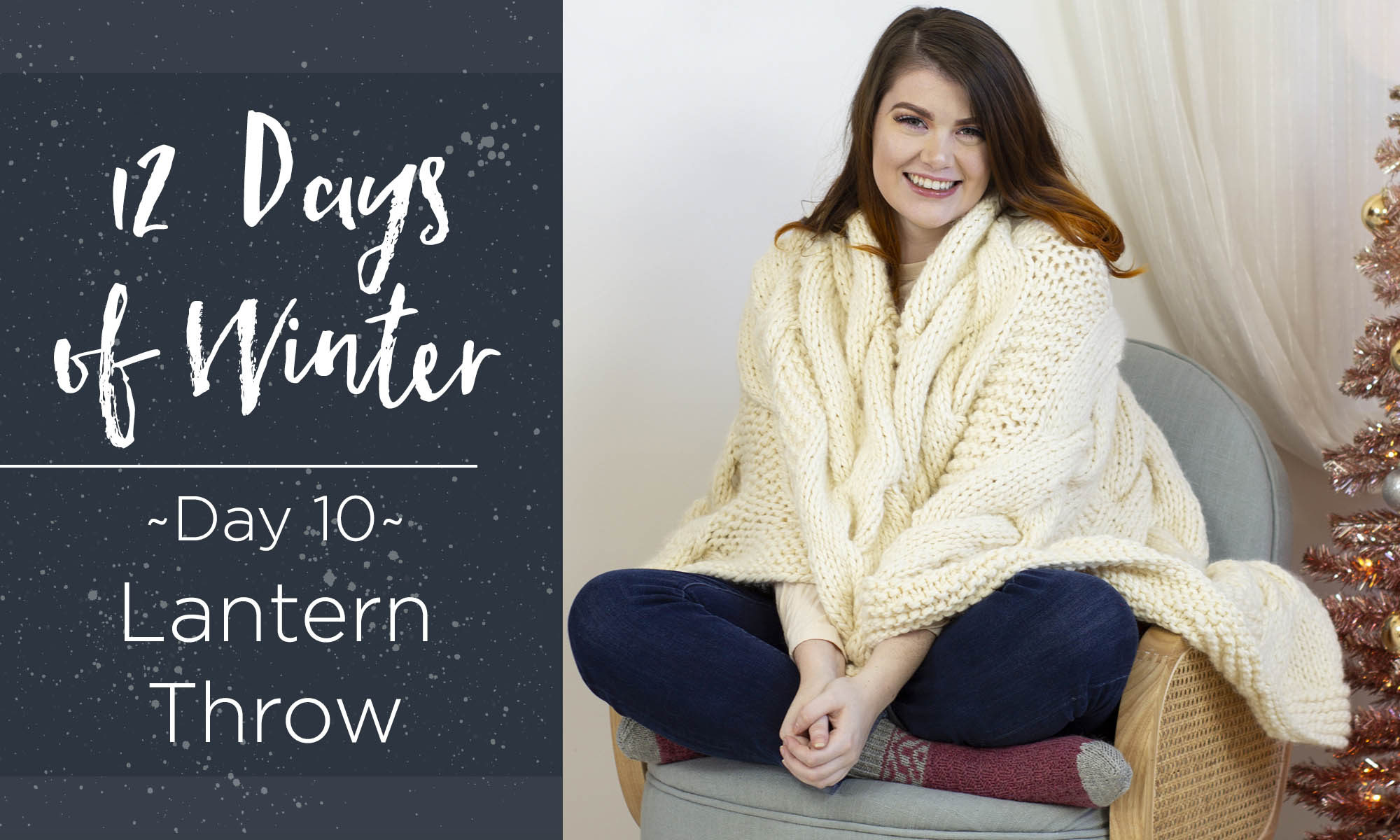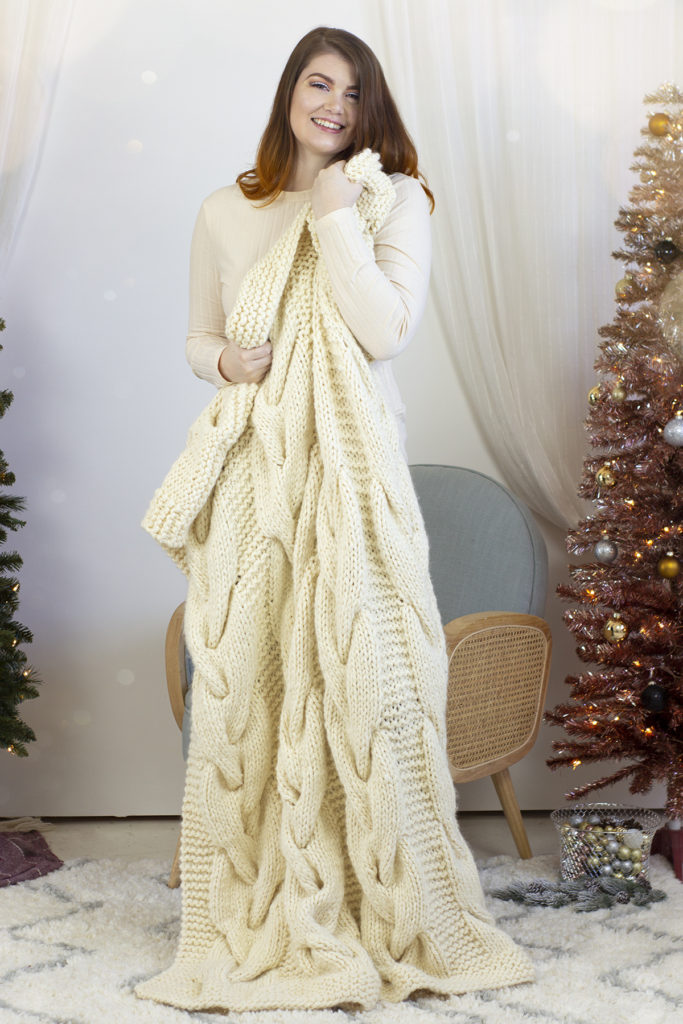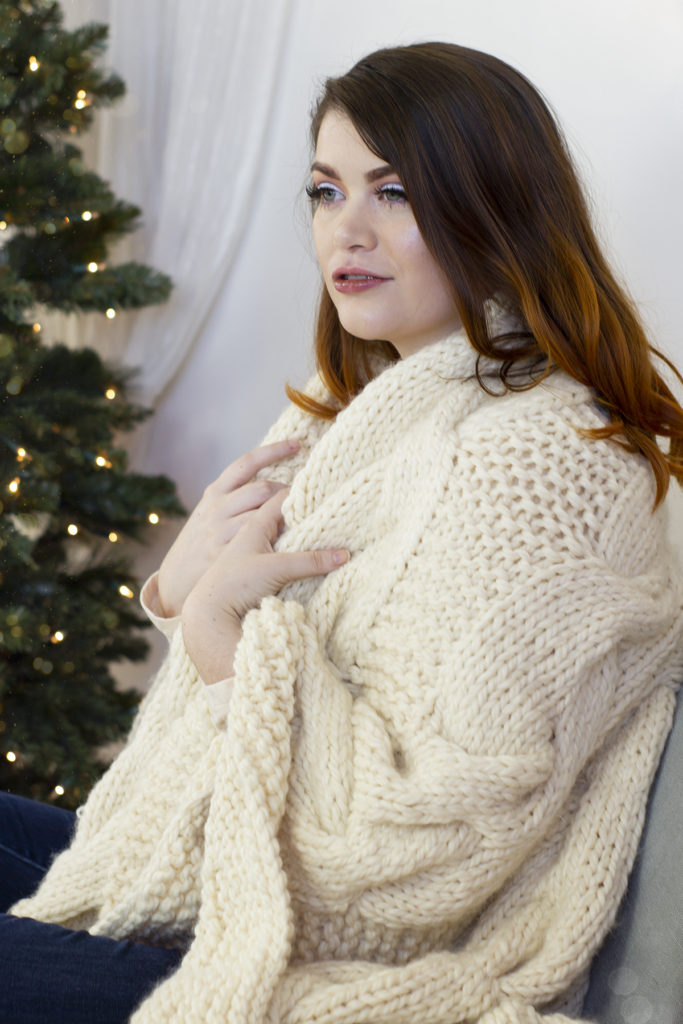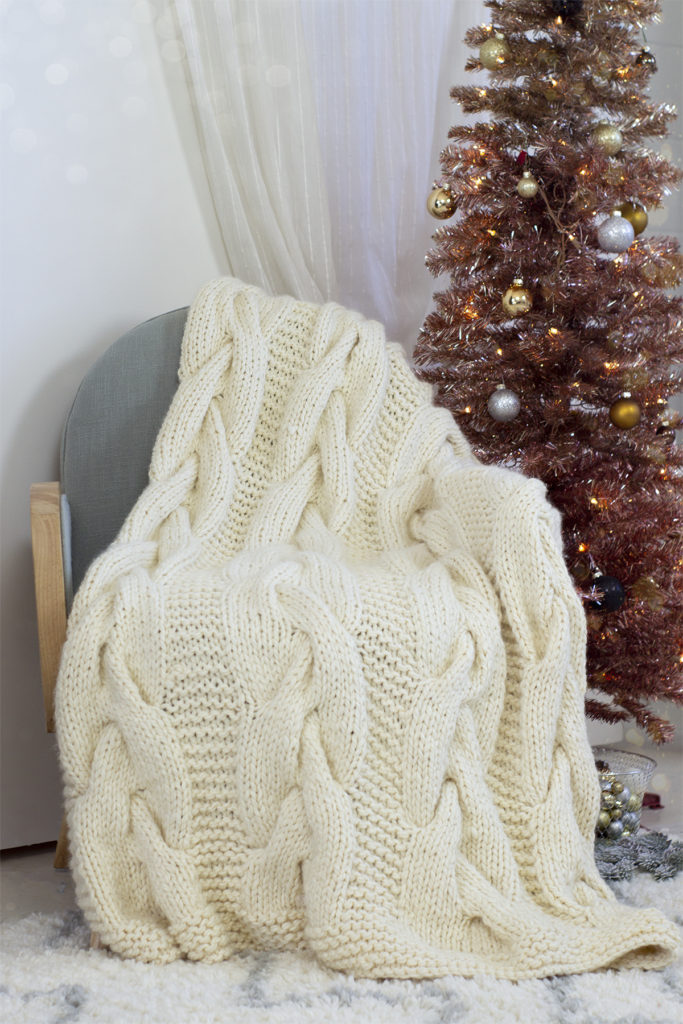Winter is the season of magic and mystery. The cold weather is a shock to the senses, and beautiful snowfall is one of nature’s quiet little miracles. For yarn crafters, it is a season full of project inspiration. From cozy sweaters, to snuggly scarves, winter calls us to create.
At Universal Yarn, we offer an expansive line of yarns suited to all types of yarn crafters. The patterns we release are primarily for knitters and crocheters, but we celebrate all fiber arts. Occasionally, we work with indie designers, fiber artists, and social media influencers to create unique projects using our yarns to help inspire our customers. This winter, I wanted to commission a creative project and blog post featuring a yarn craft that is resurging in popularity: locker and latch hooking. We worked with a local artist, April Lee, for this project.
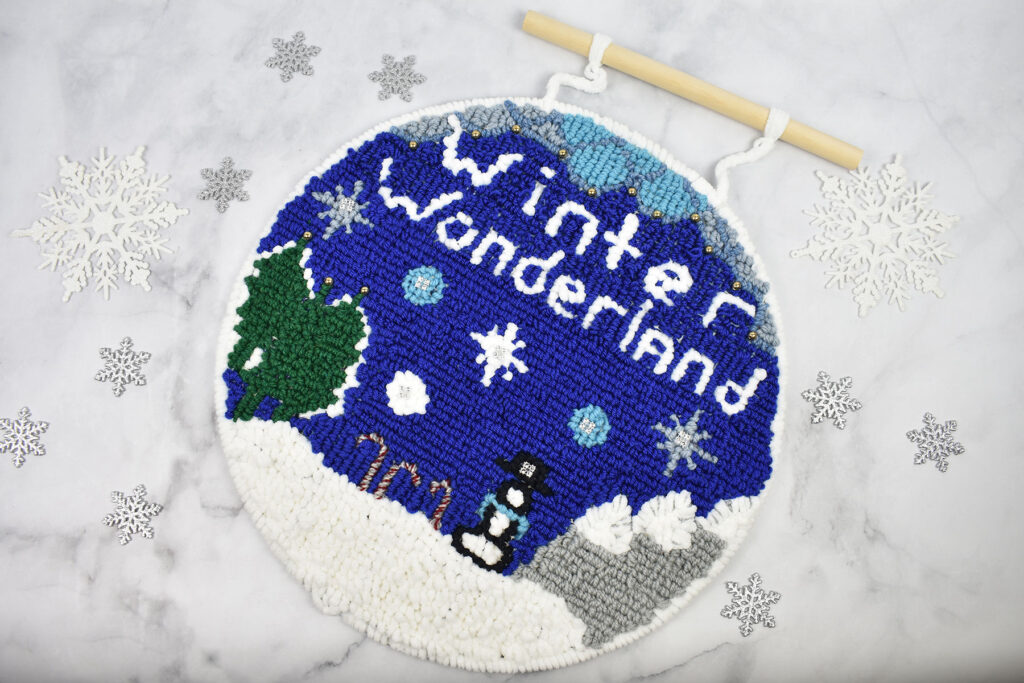
April Lee is a custom fiber artist based out of Charlotte, NC, and has been a lover of fiber arts since she was 15 years old. During the pandemic, April tried out the locker hooking craft, and the rest was history. In 2021, she launched Latched By Lee, LLC, which is a custom fiber art business specializing in one-of-a-kind art pieces using various textiles. Every item is handmade using latch and locker hooking techniques. Here is what April had to say about locker and latch hooking.
‘Locker hooking is a technique that uses a tool with a crochet hook on one end, and a needle eye on the other. It creates loops of yarn that are pulled through the backing of a mesh canvas to create a design. The loops are locked into place using the yarn that is threaded through the needle eye. Locker hooking originated in England in the 19th century, and at that time was primarily used to make rugs. Stripes of fabric that were no longer suitable to use for clothing were used to create floor mats, rugs, and quilts. Since then, locker hooking has expanded greatly. You can create wall hangings, bracelets, baskets, purses, chair cushions, pillows, and much more! I love exploring all of the different things I can create using the locker hooking technique.’
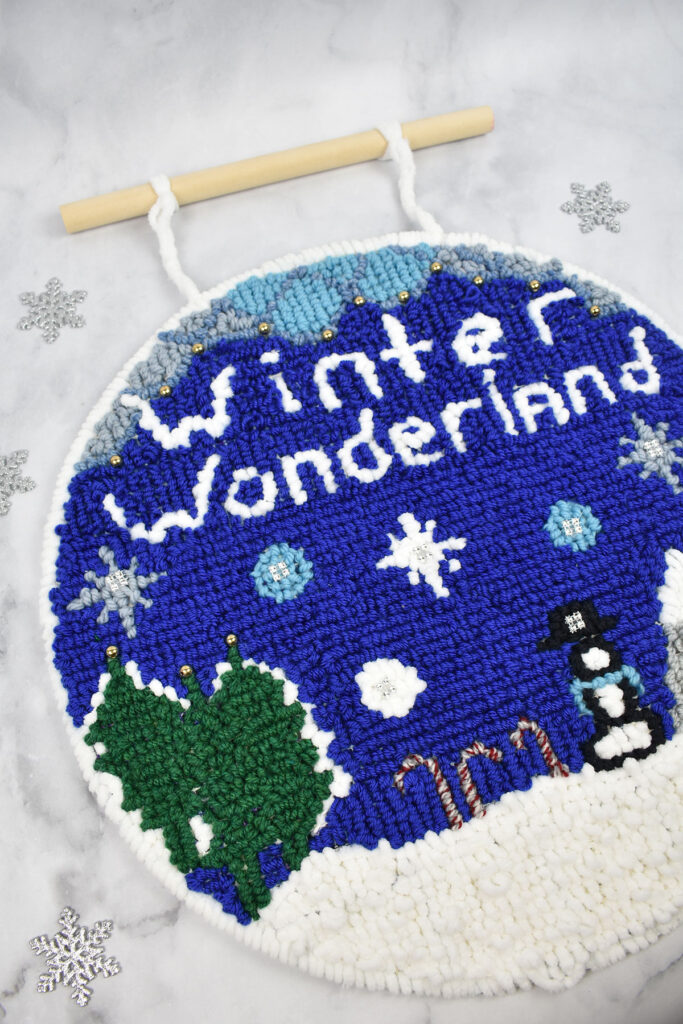
We asked April to create a wall hanging art piece inspired by the idea of a winter wonderland. April chose a variety of our yarns to use for this project, and I have to say I was SO intrigued to see how all of these different fibers would work together in the piece. Here is what April had to say about some of the yarns that were used.
‘I thoroughly enjoyed using the various types of yarns from Universal Yarn to create this project. Bella Chenille’s polyester fibers are the perfect fit to create a fluffy and realistic looking snow texture. The Cliffs Of Moher yarn from Yarn Vibes was one of my favorites because the wool created tight loops that gives a different feel on the canvas. A helpful tip while locker looking is to double up thinner yarns to make the loops more secure, and it also helps to close any gaps on the canvas.
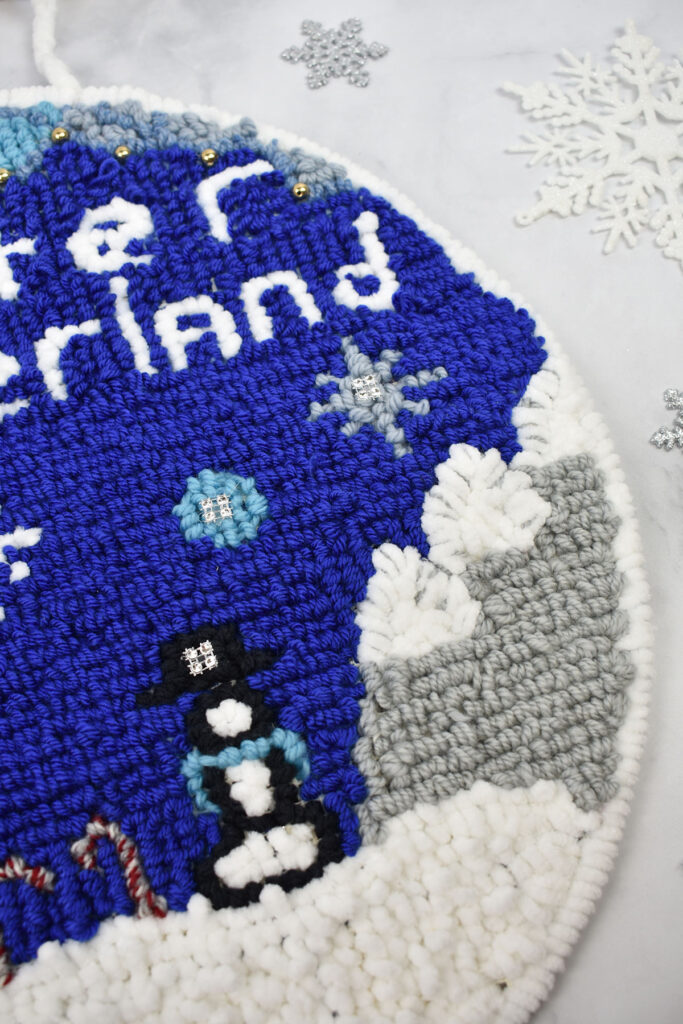
Deluxe Bulky Superwash was very smooth, making for a great transition when locking loops in place. I used the Rico Design Soft Merino Aran virgin wool yarn to create the snowcapped mountains. Terrain was essential to this project because it added layers and dimension to the piece. For the background, I used Uptown Worsted in Royal Blue, and it did not disappoint. The blue allows for the other colors to shine and gives the true winter wonderland appearance. I appreciated the tightly woven Ricorumi yarn because I used it as the locking yarn (the yarn through the needle eye) to help secure the loops in place. Finally, I added a few beads and rhinestones for embellishments to give a ‘pop’ to the piece, because what is a winter wonderland without some sparkle?
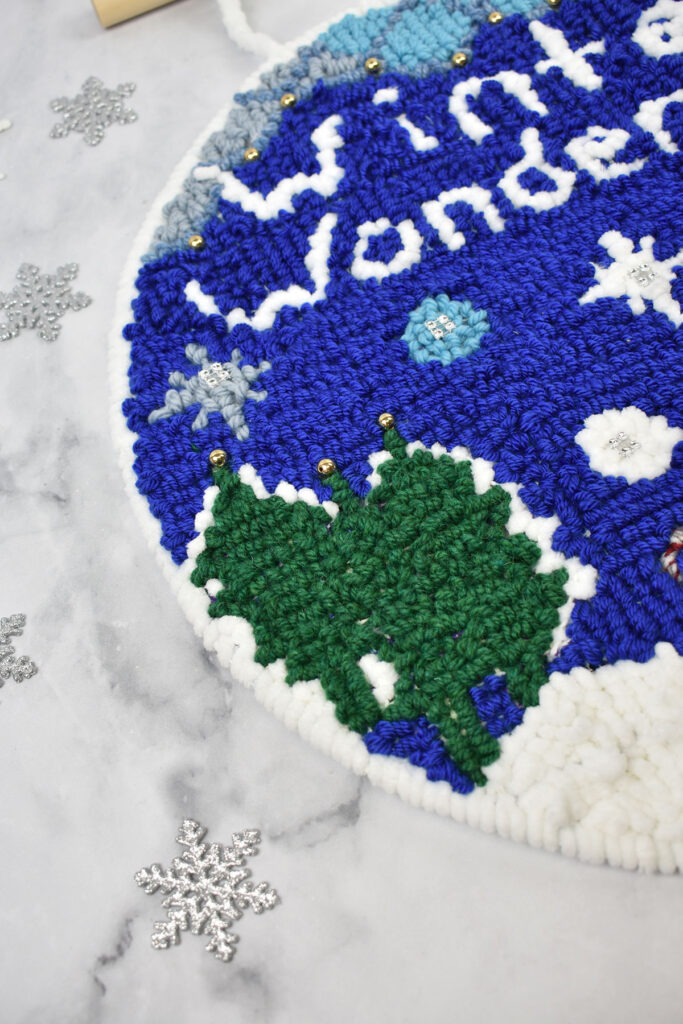
Overall, I really enjoyed creating this piece and exploring the different textures of the yarn. Universal Yarn has quality yarn that can be used for many different yarn crafts.’
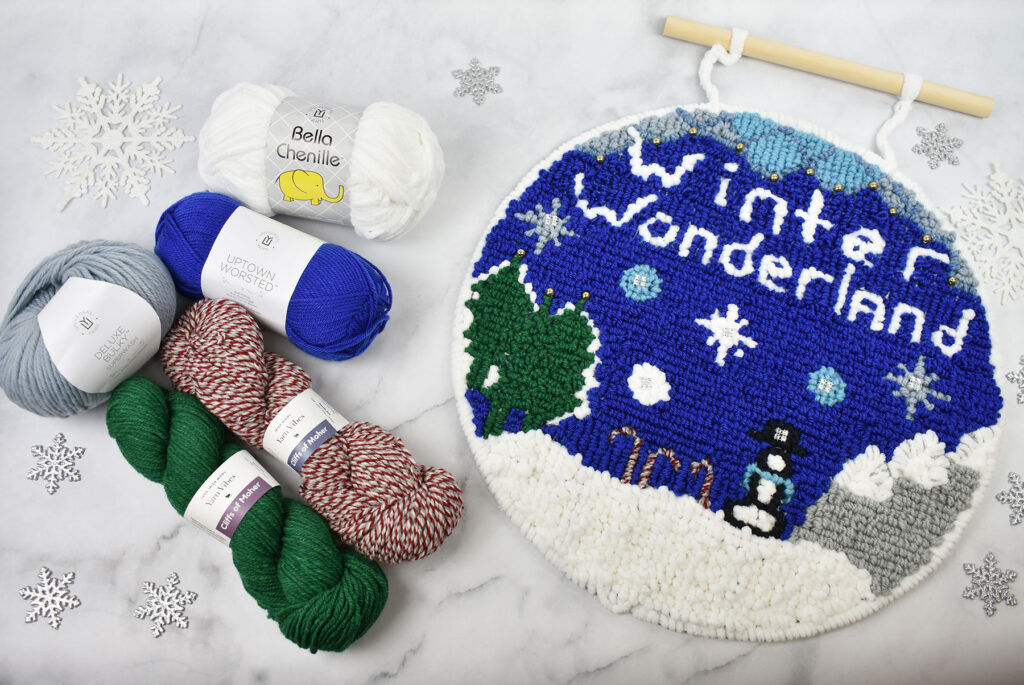
To get started with locker hooking, April recommends some materials that you will need: a latch hook mesh canvas with 3.75″ squares, a locker hooking tool, the yarn of your choice, and of course, your creativity! If you are local to the Charlotte area, April offers classes and workshops throughout the year. Her next class will be in March 2024 at the Craft Fest hosted by Petty Thieves Brewing. You can find out more about April’s work on her website www.latchedbylee.com and be sure to follow her on Instagram @latchedxlee .
I hope that this post has given you some winter wonder-ful inspiration to try something new. This could be a great hobby to explore in between large knitting or crochet projects, and to use up some of your stash yarns! Learning a new craft can also be a fun way to beat the cold weather blues. Wishing you all a fabulous 2024!
Happy Crafting,
Aubrey
